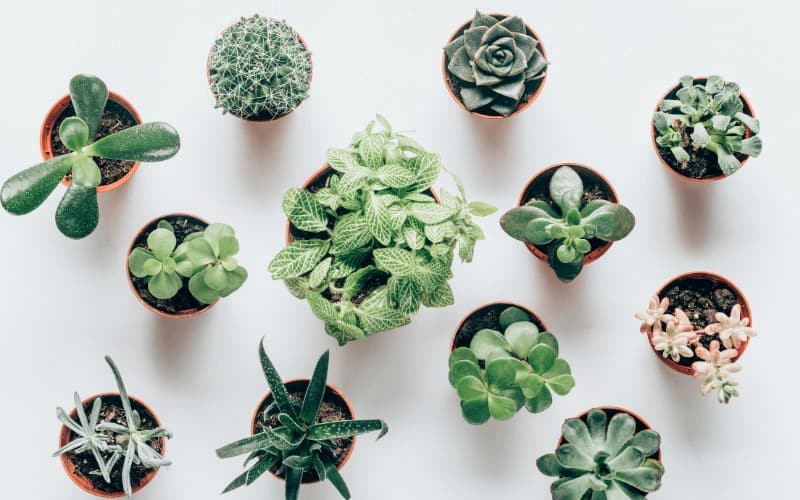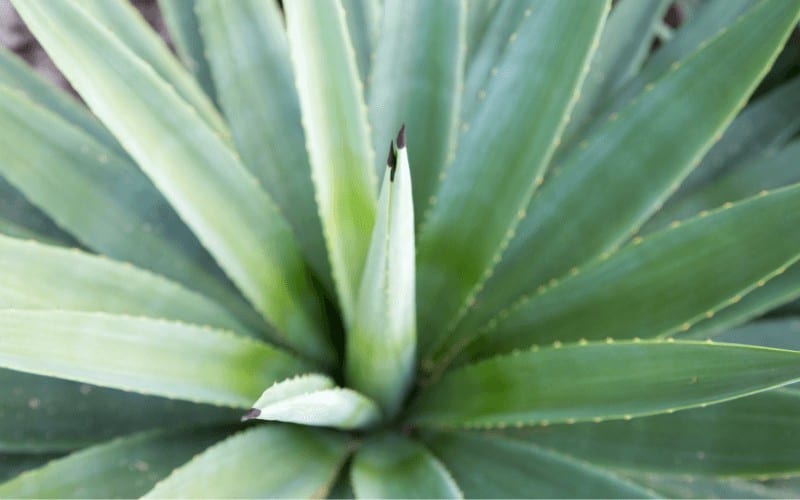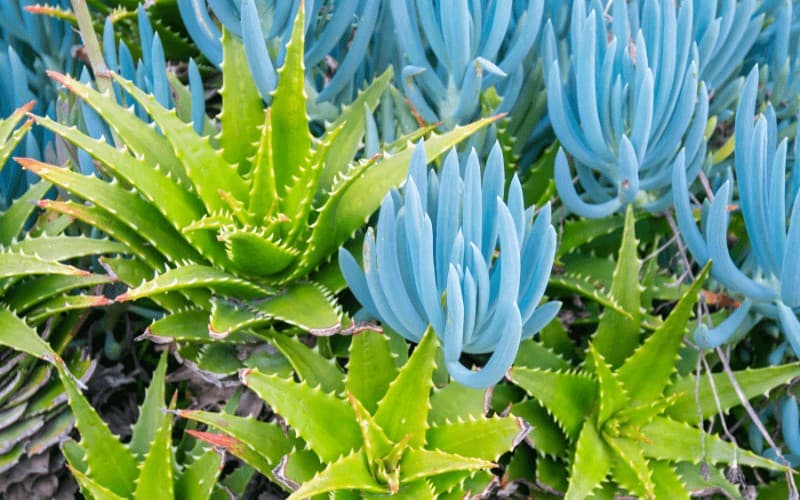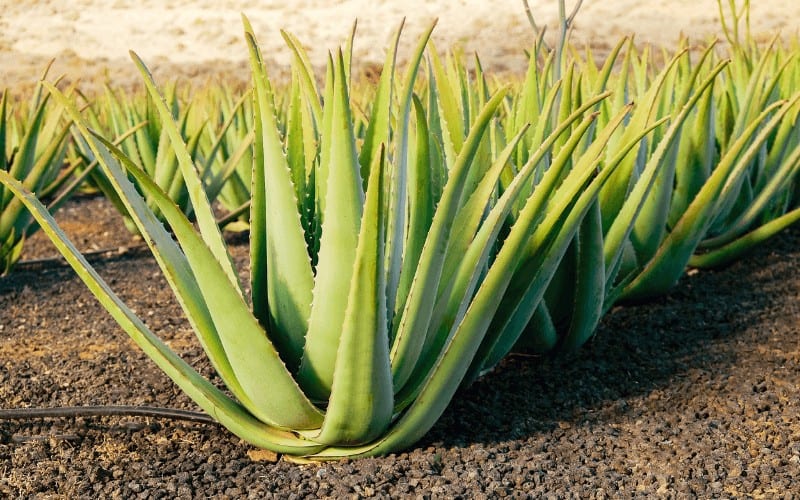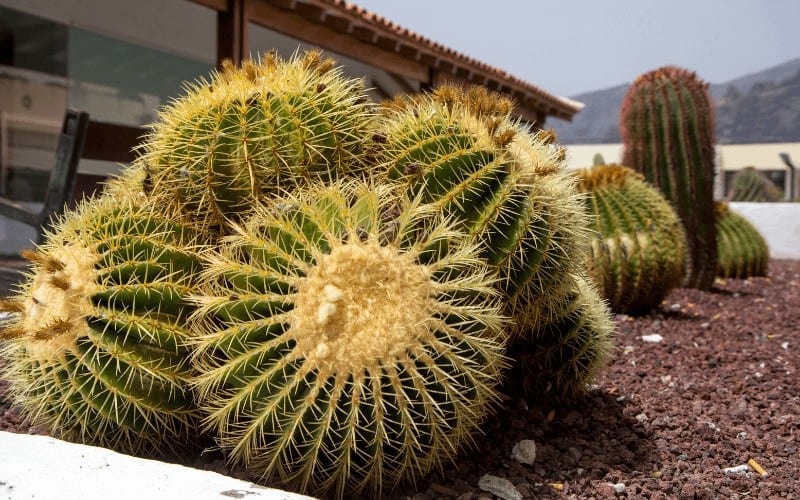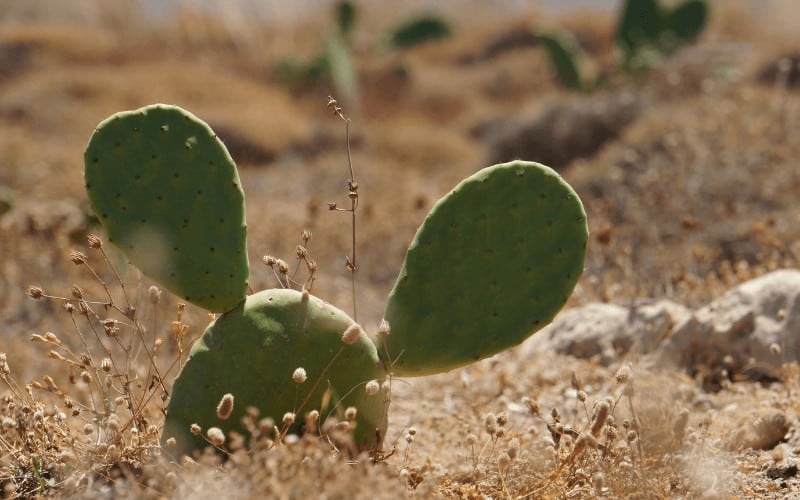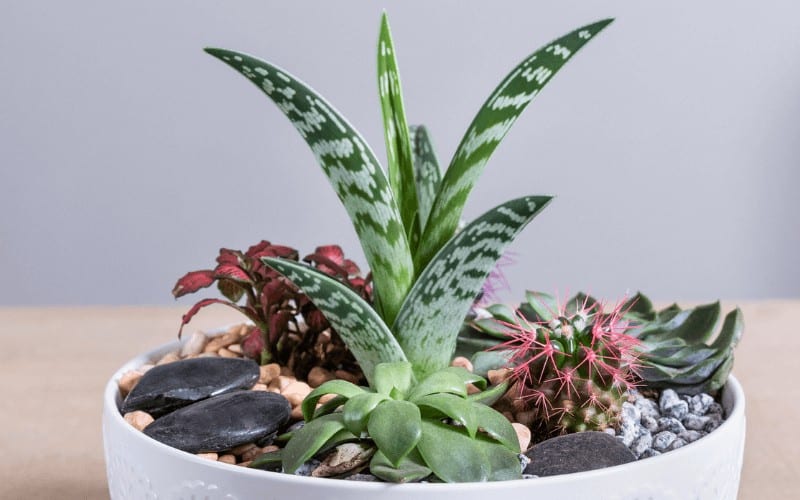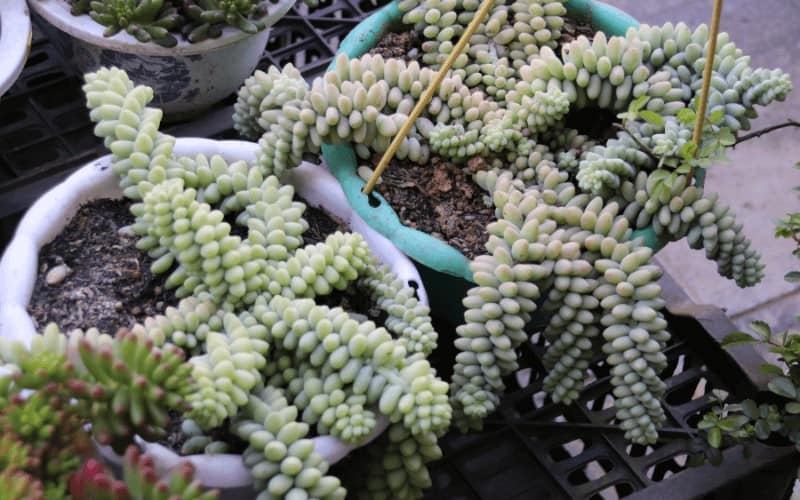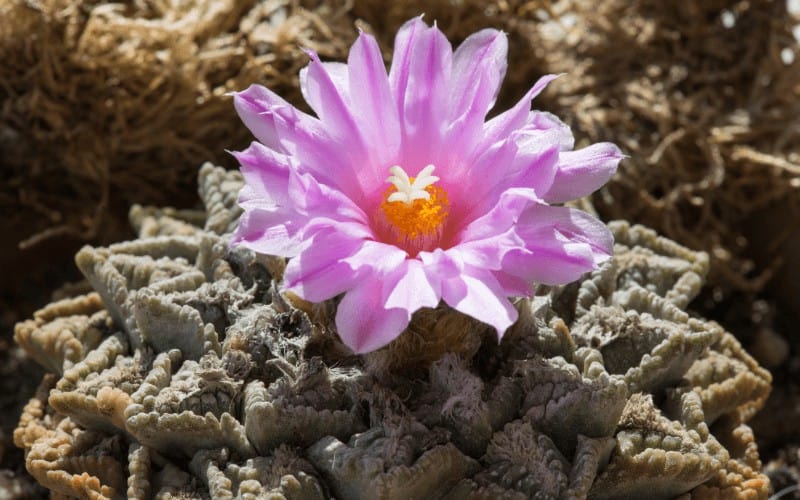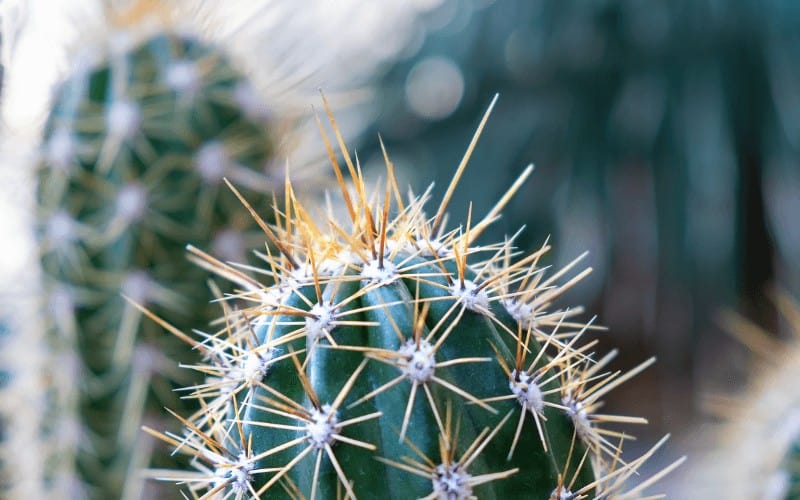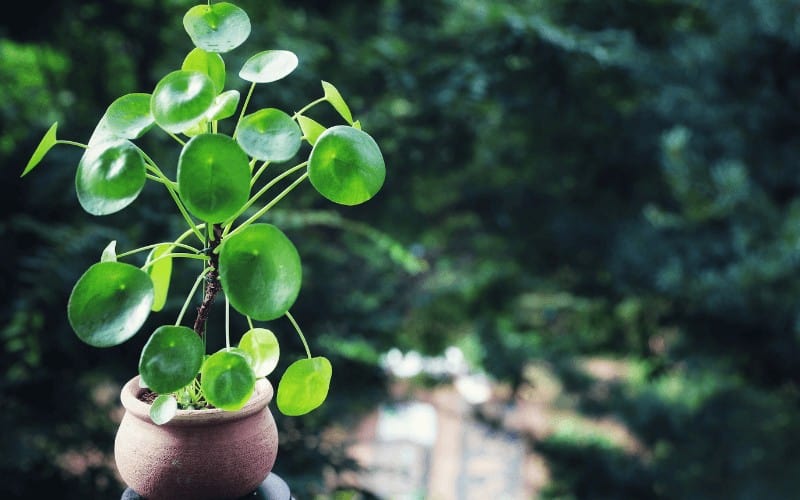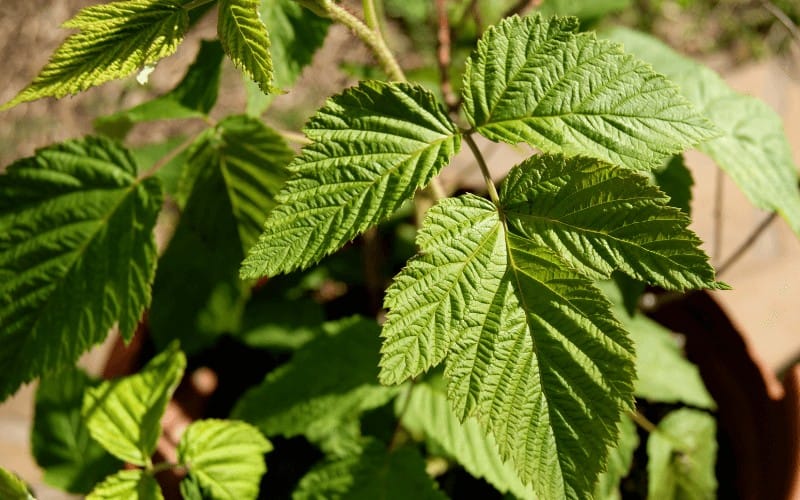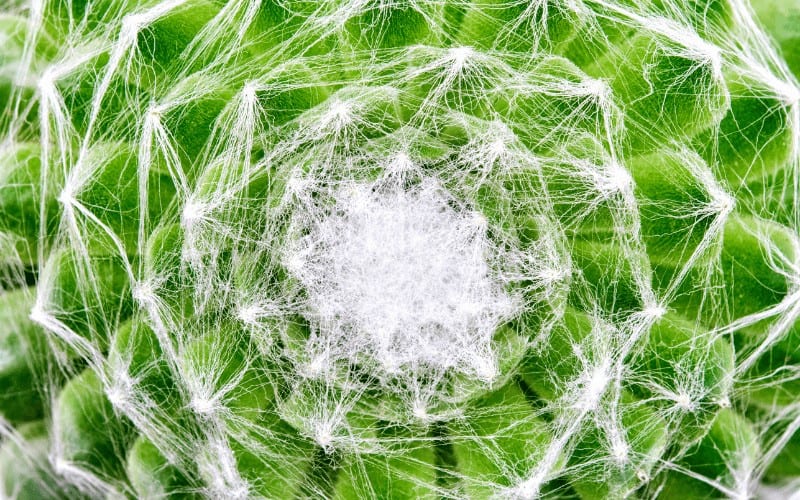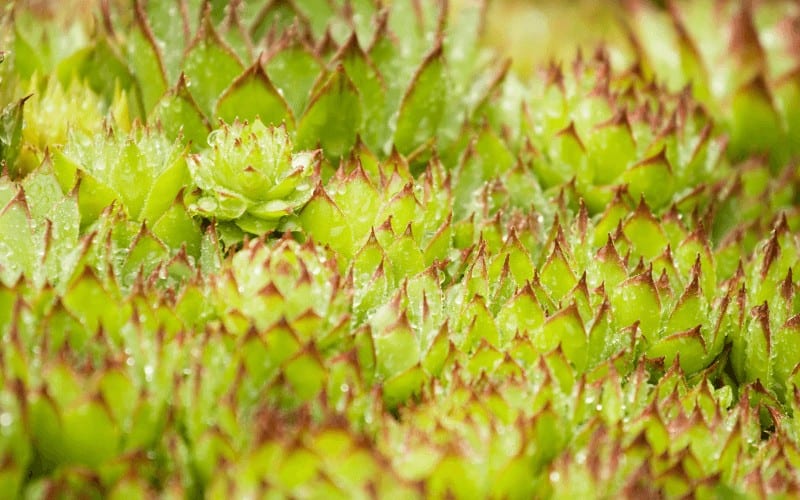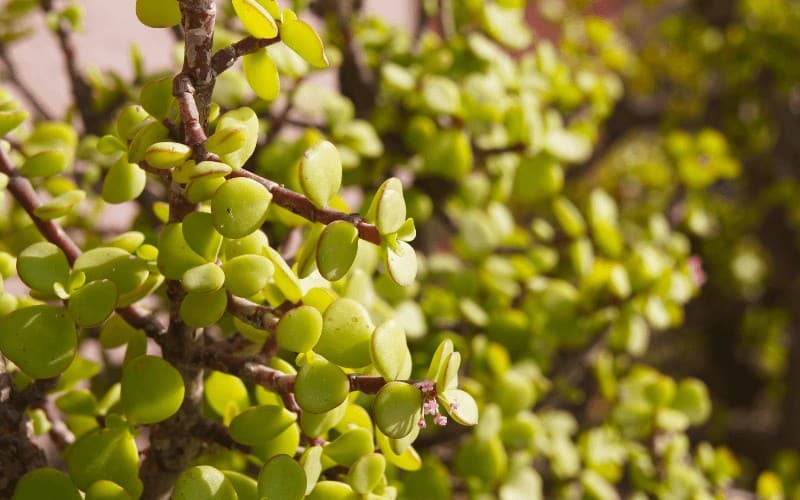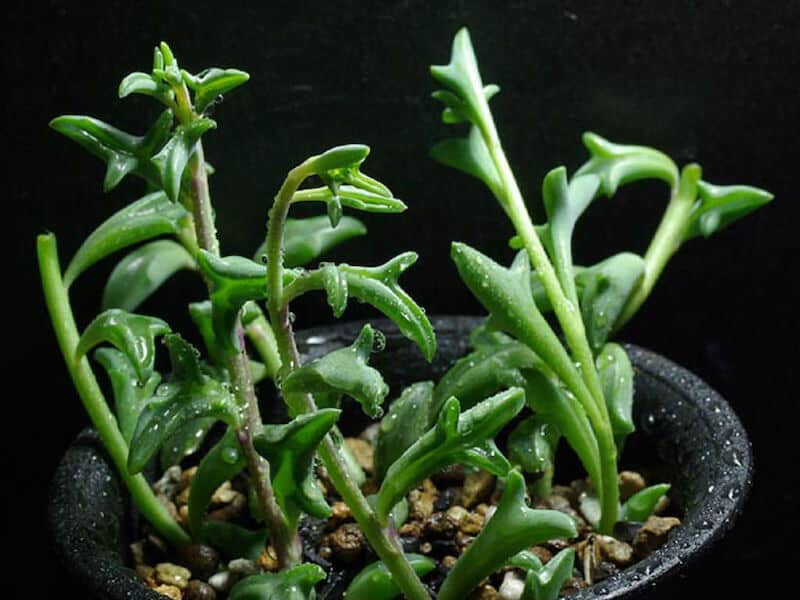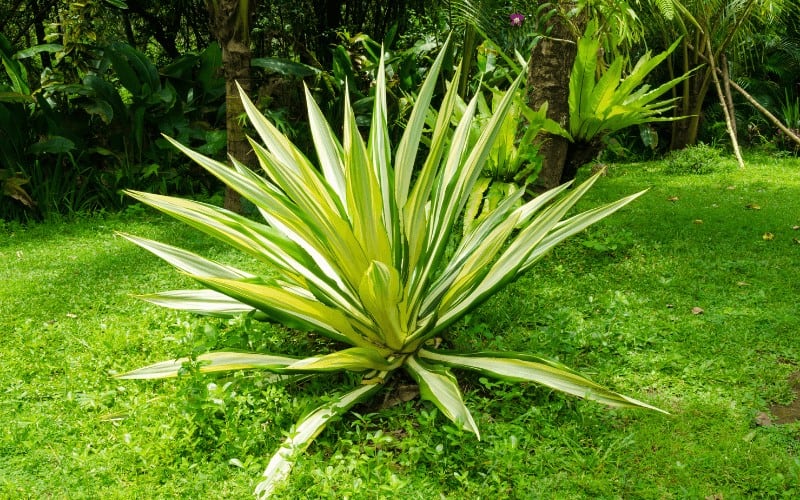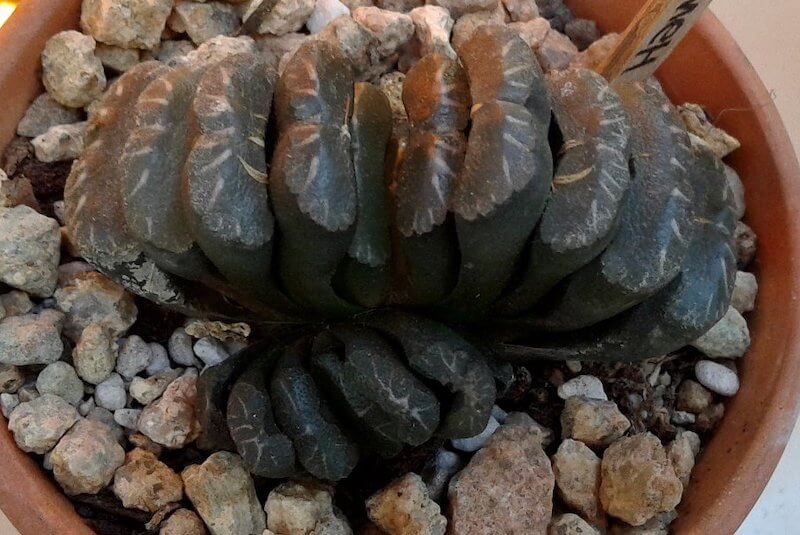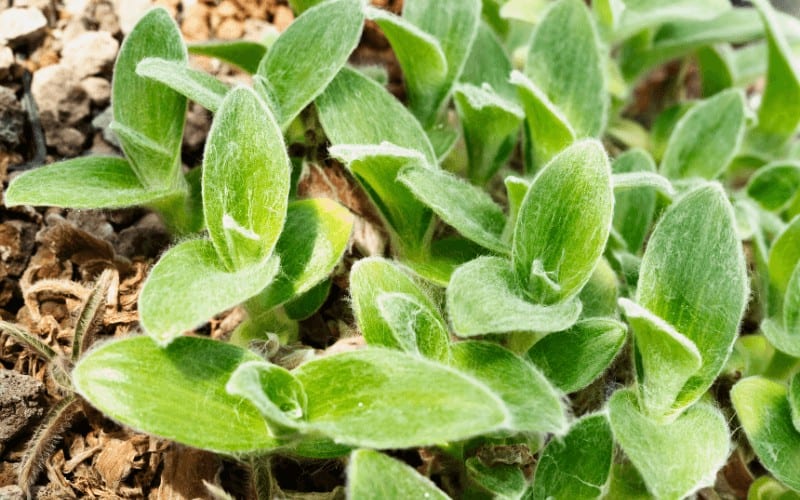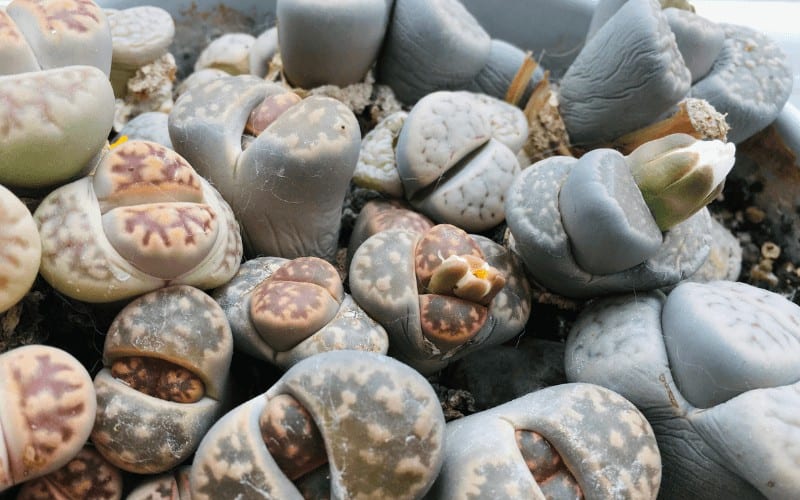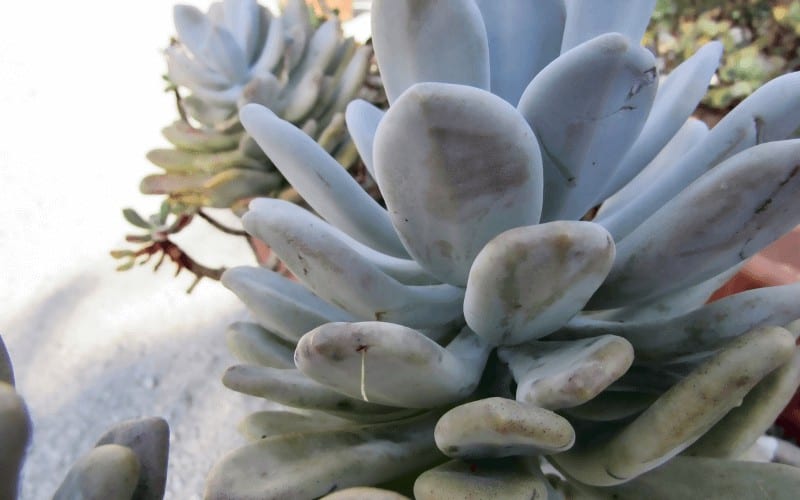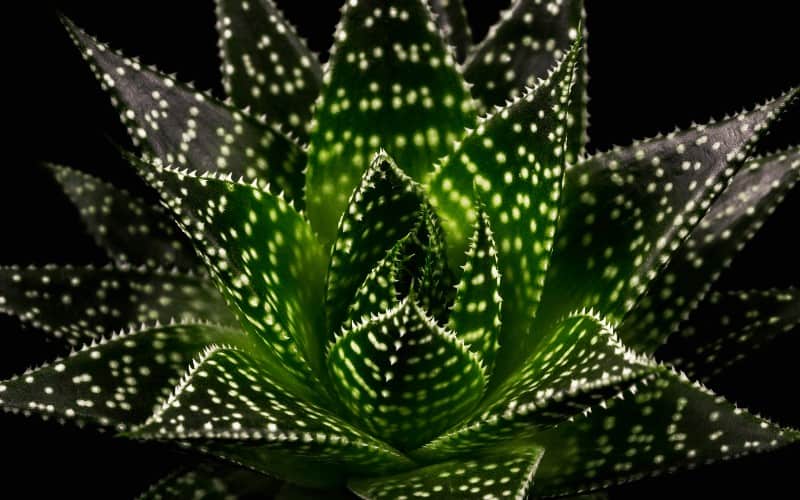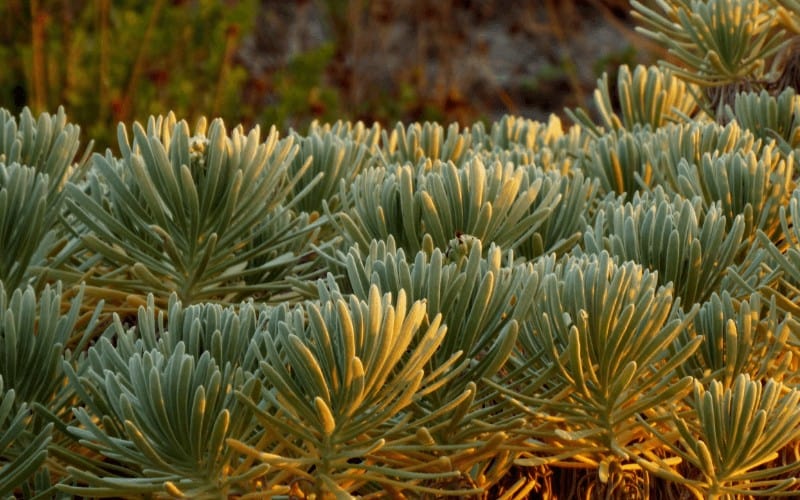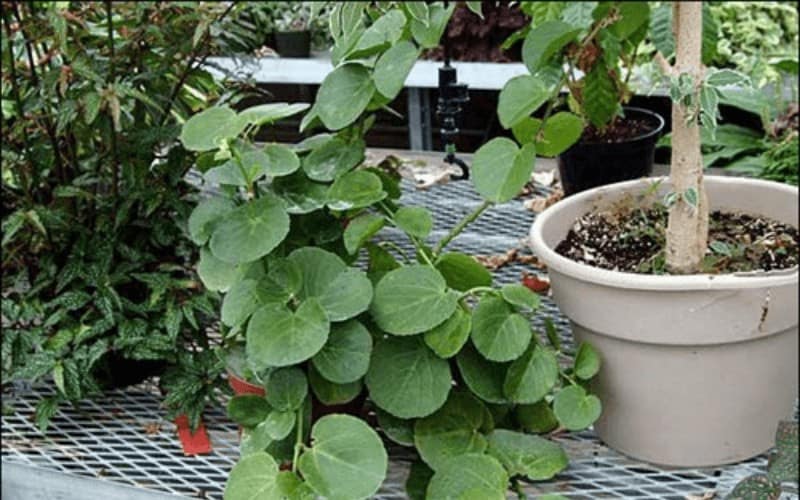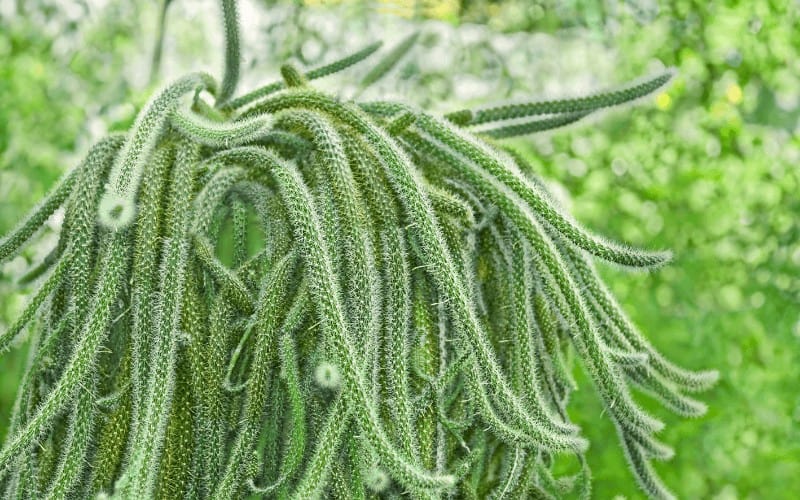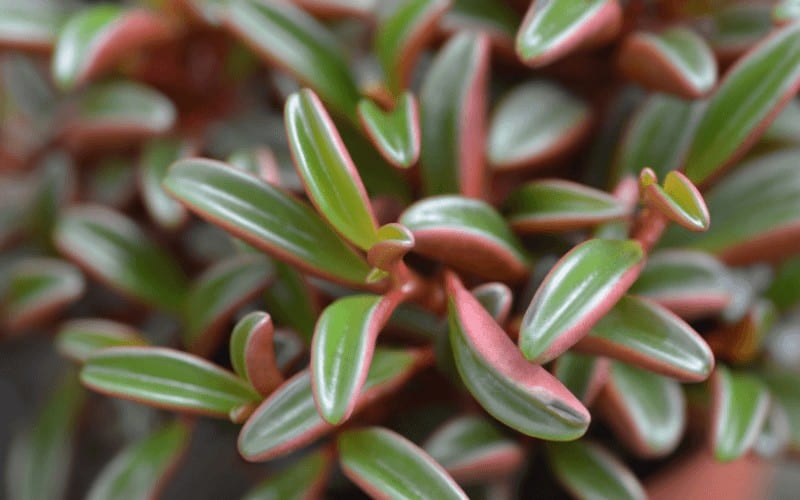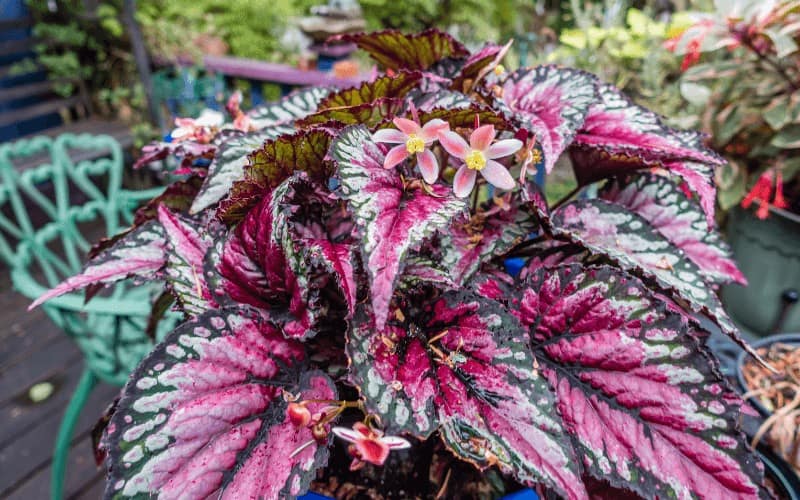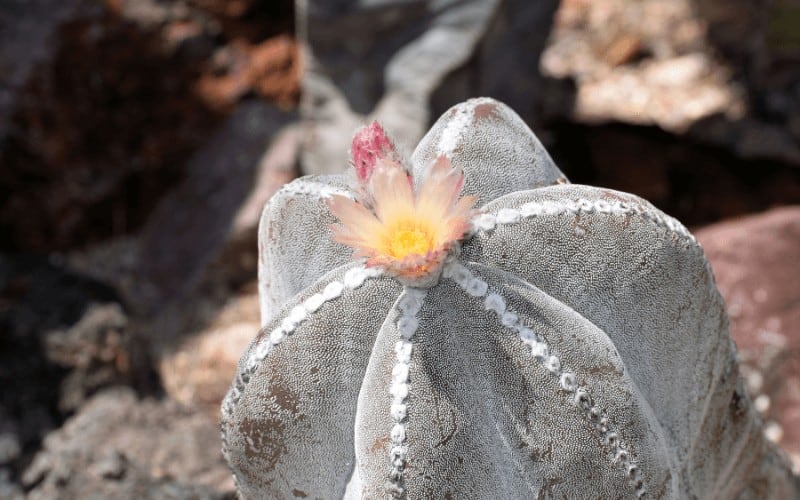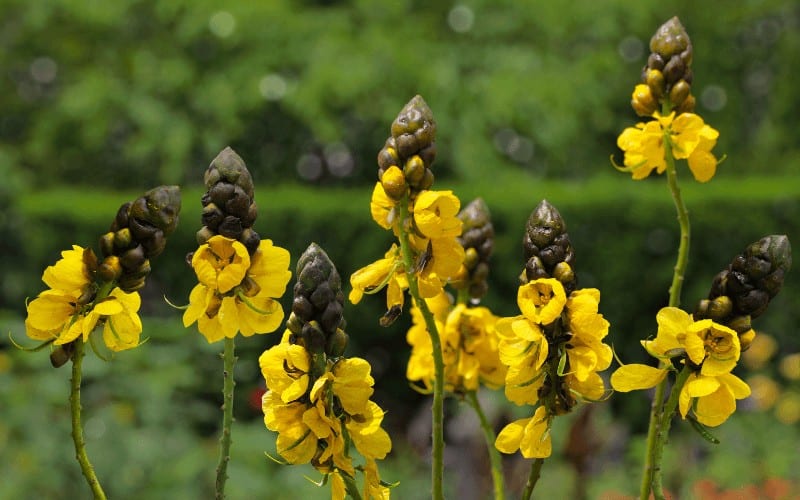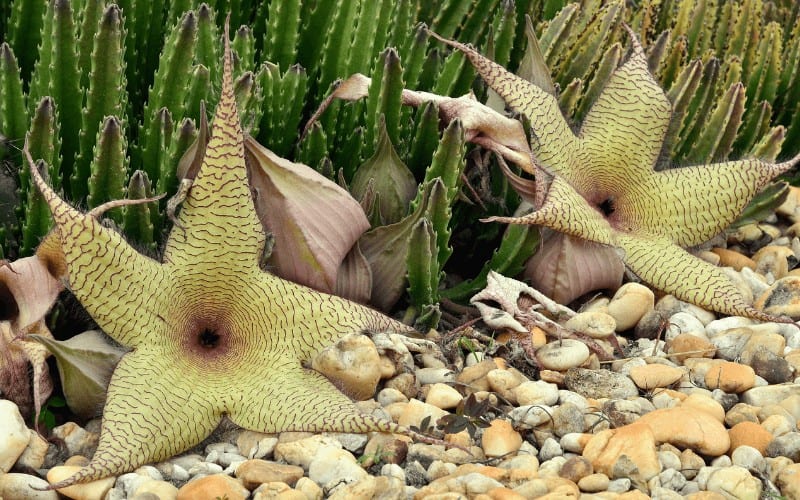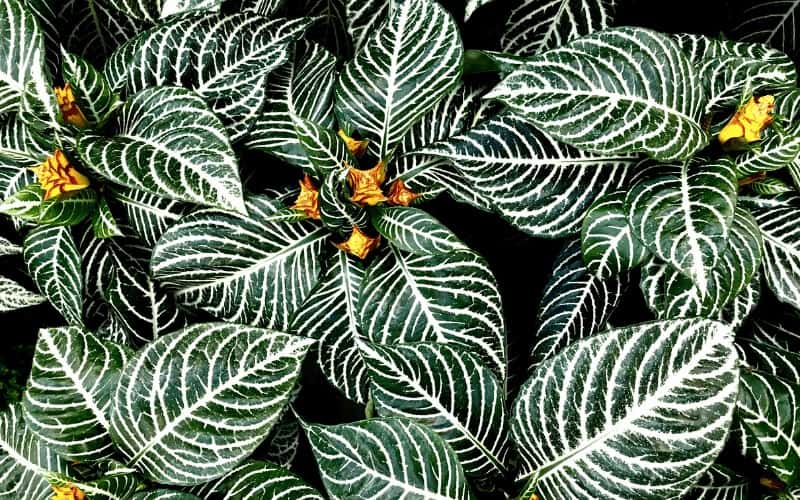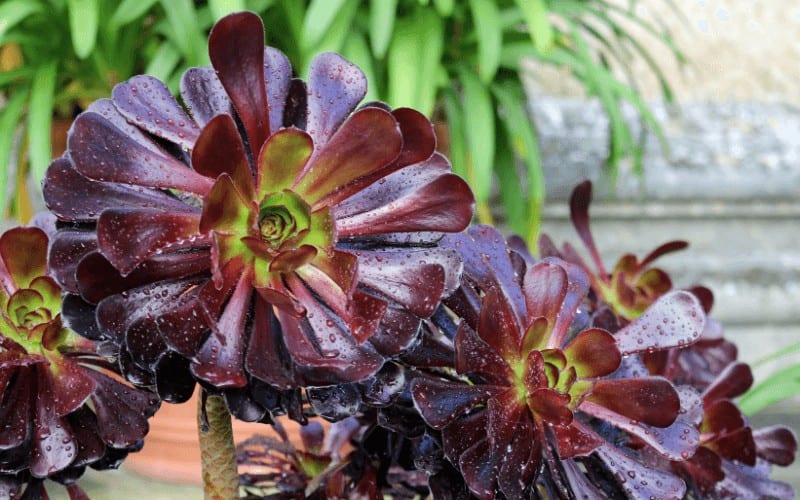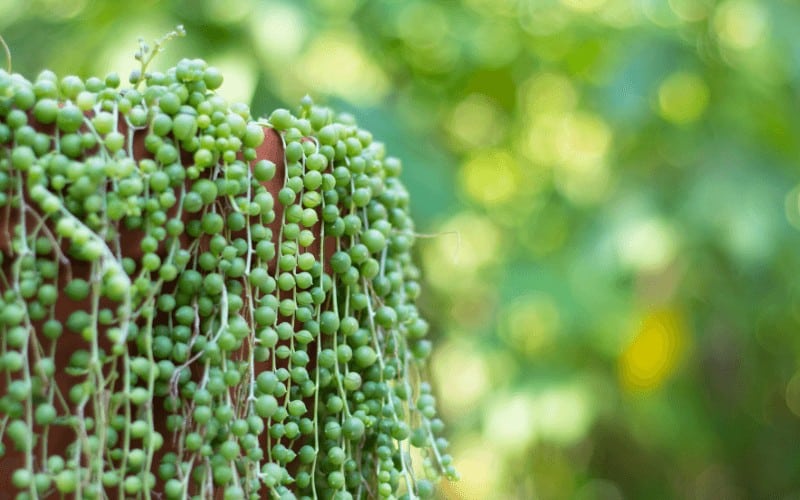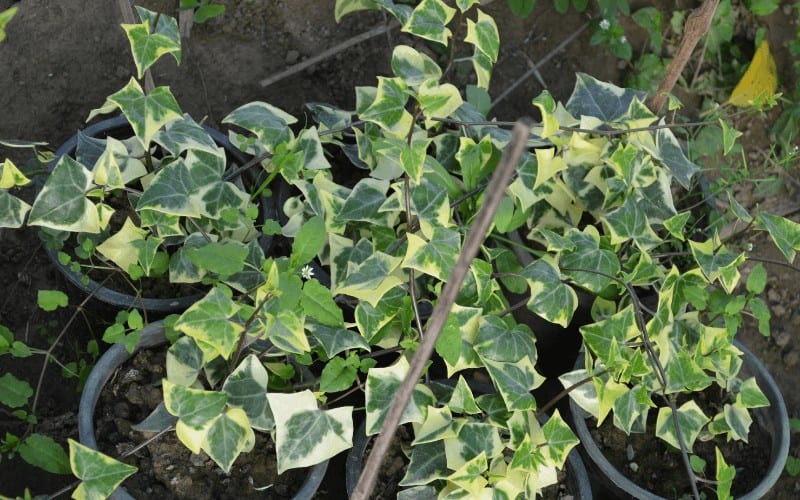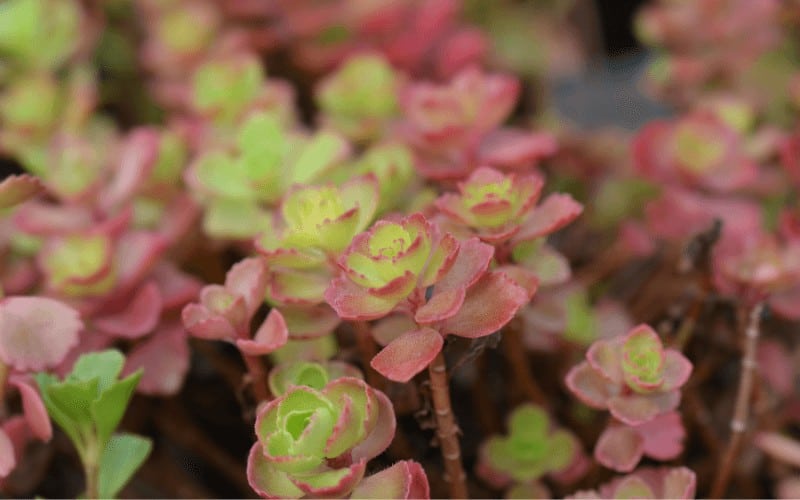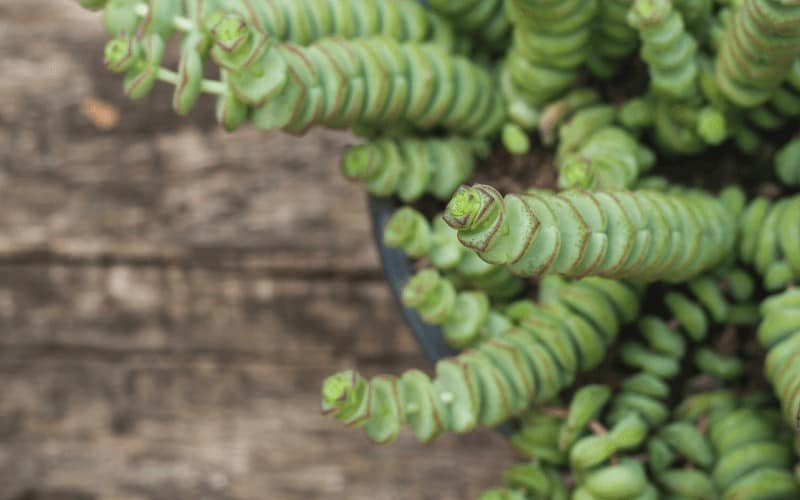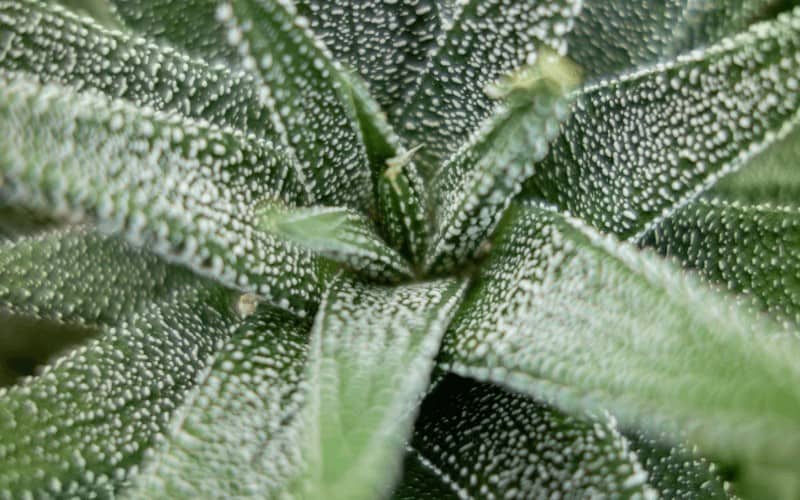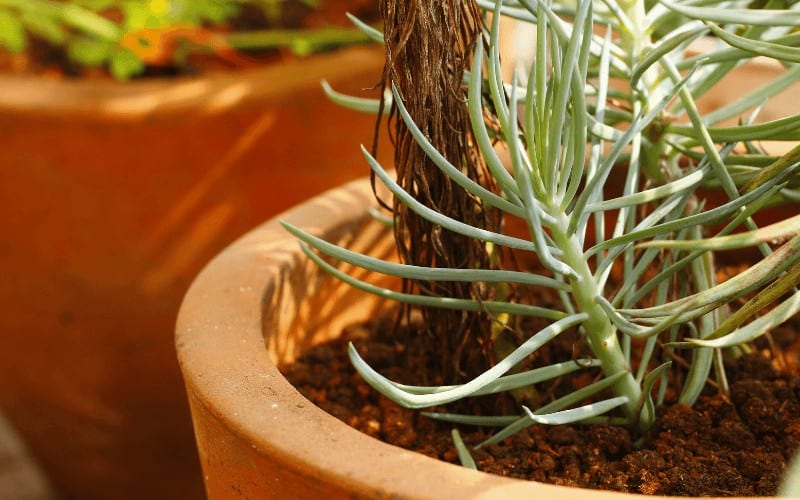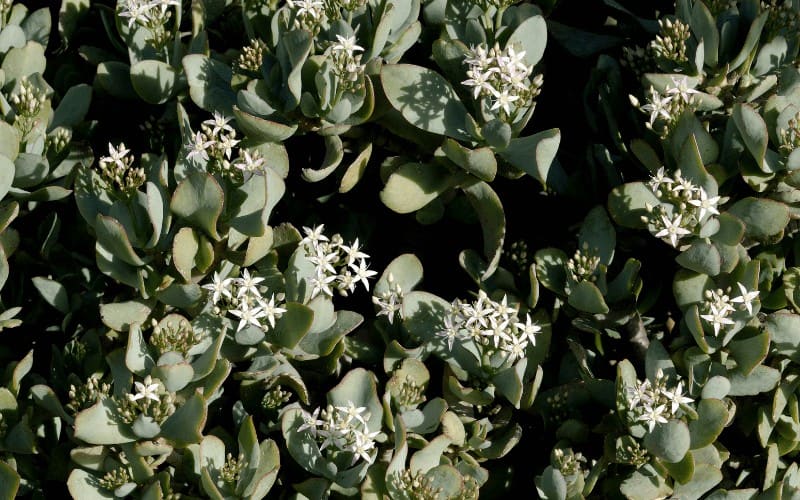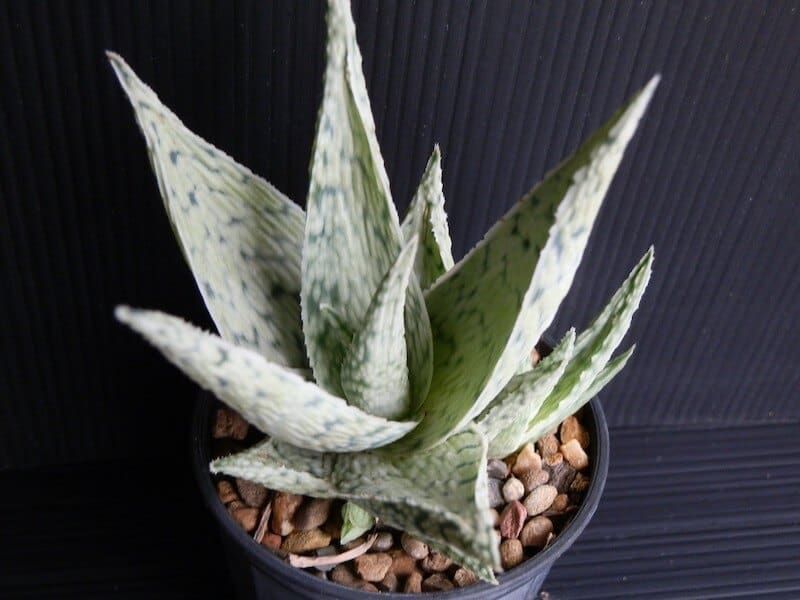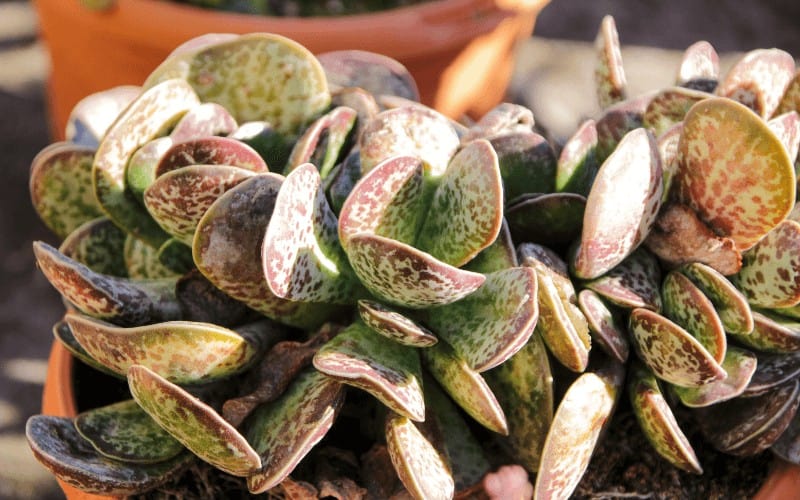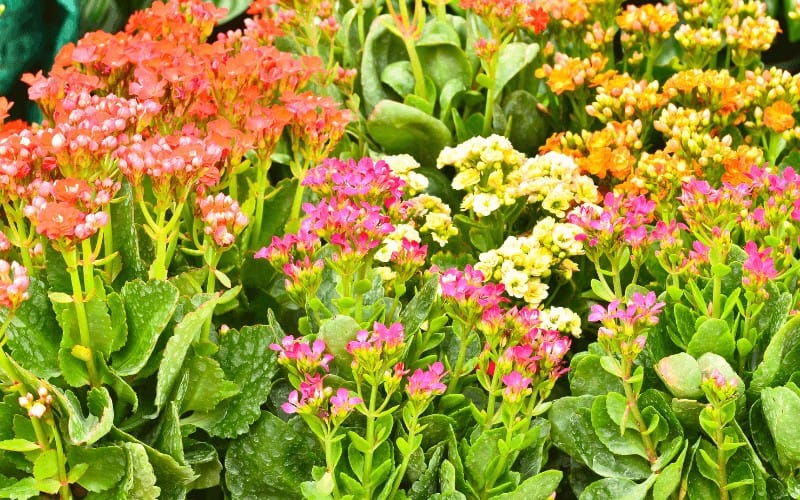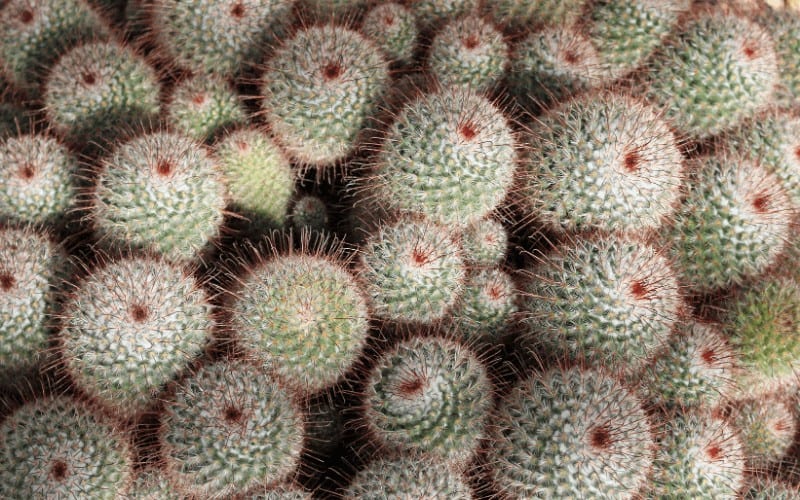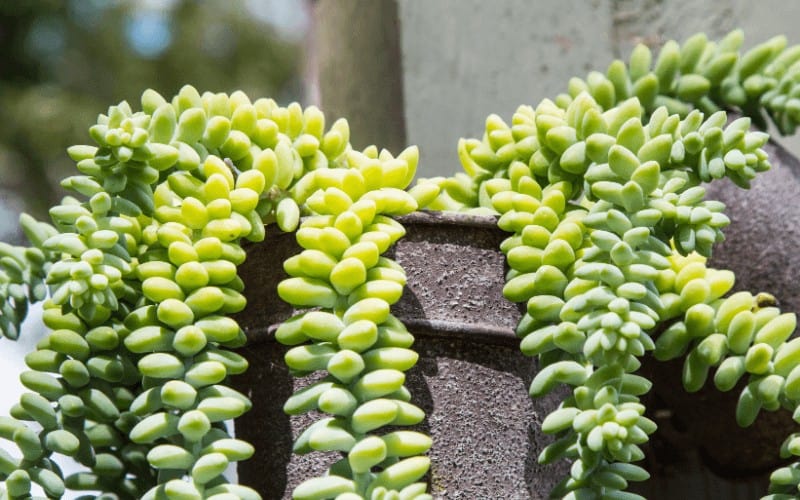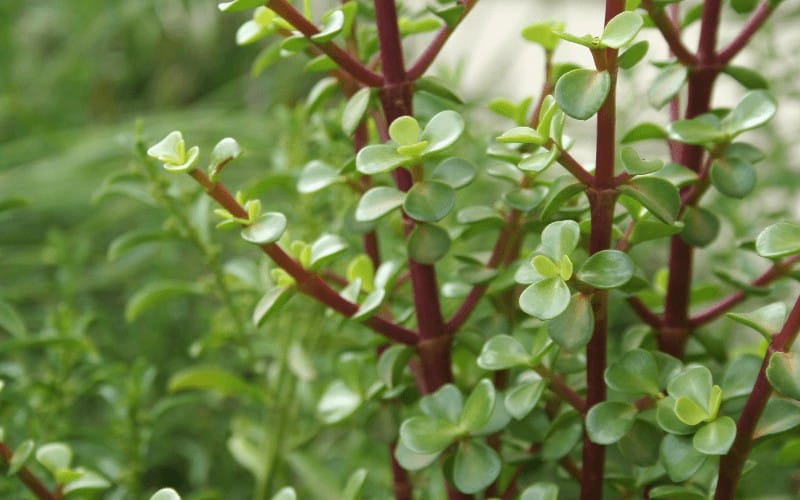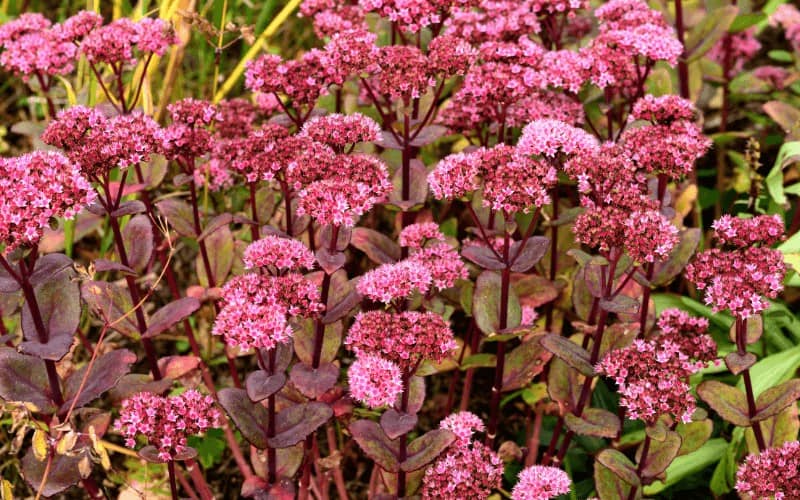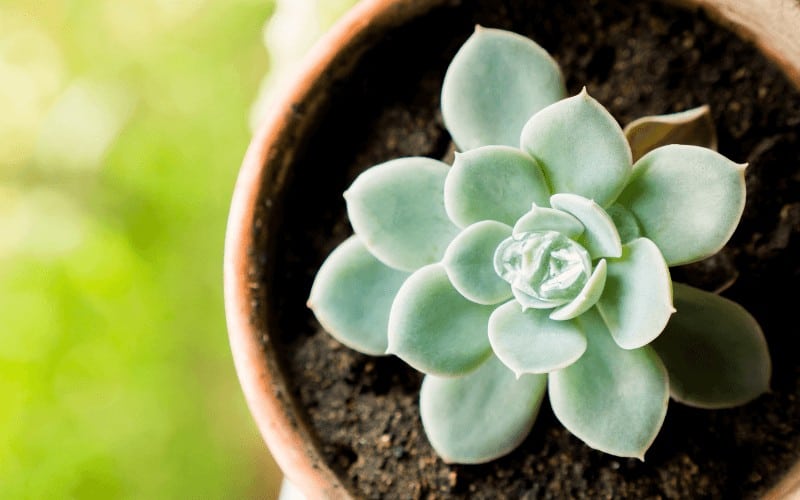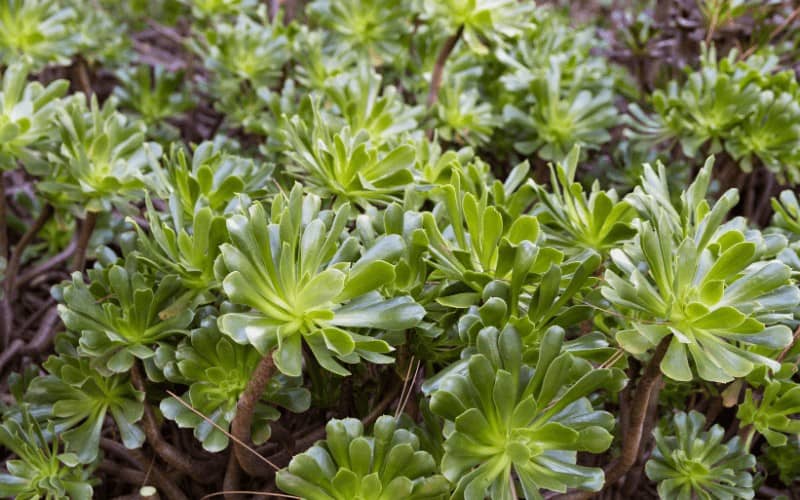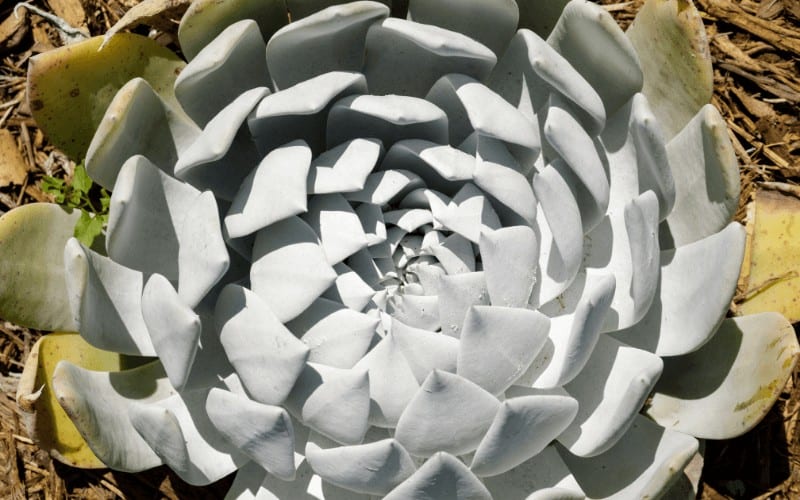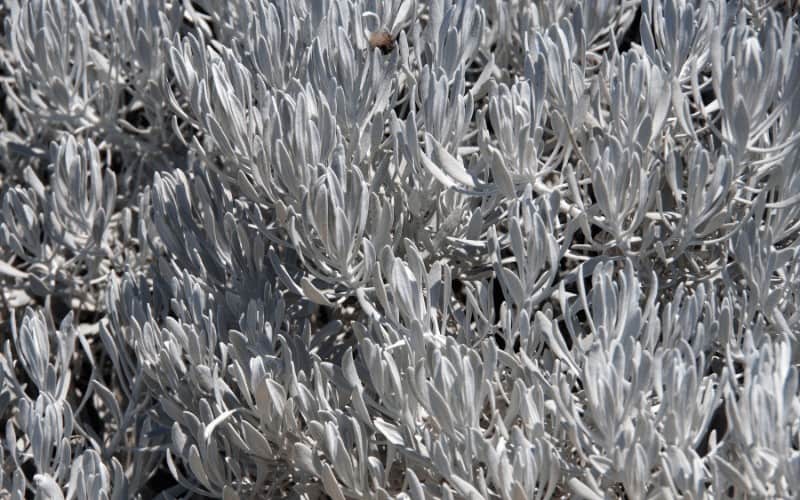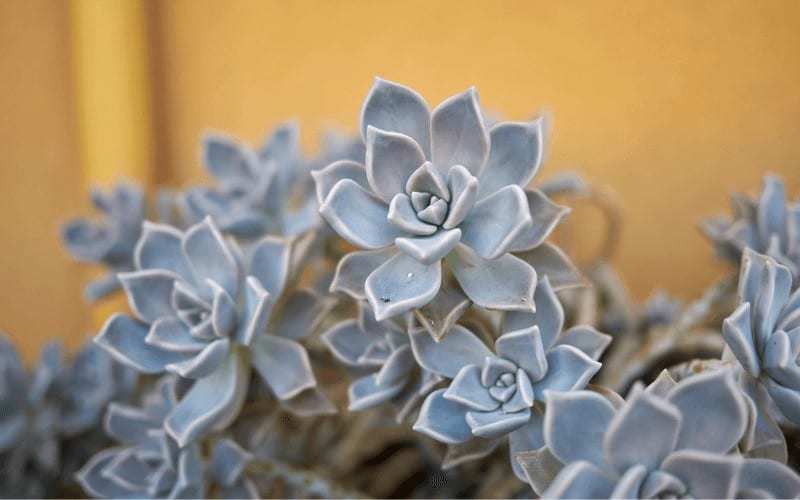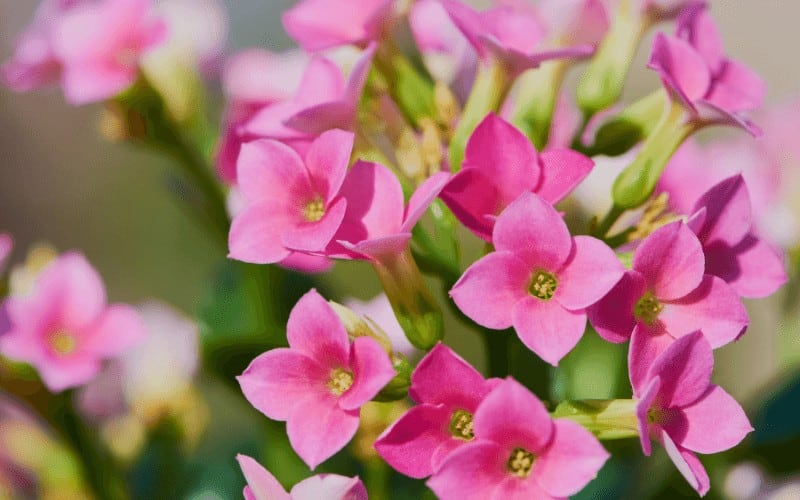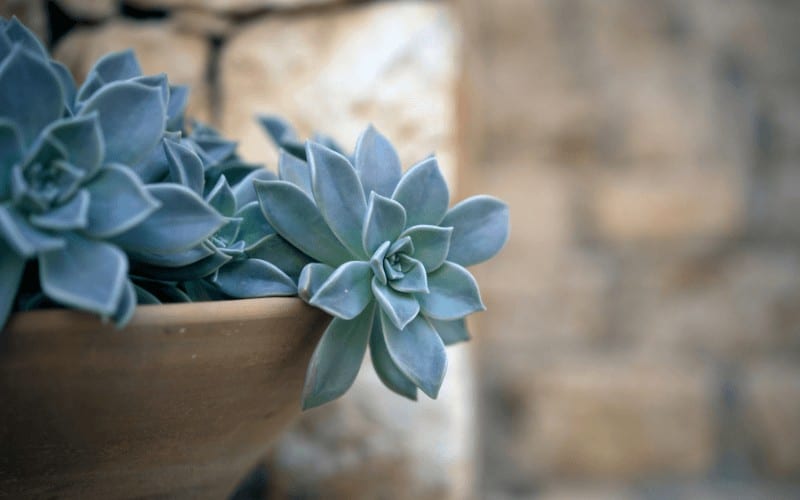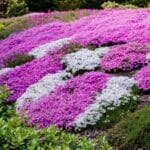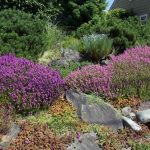Succulent plants have become incredibly popular as ornaments used in indoor spaces like bedrooms, living rooms, dining rooms, and even offices. The plant can also be found in various outdoor gardens for different purposes.
Succulents are the perfect types of plants to grow for busy people as they’re easy to maintain. Essentially, succulents need only low-key maintenance, a little amount of water, and the right amount of sunlight to bloom.
There are different varieties and types of succulents, and according to Country Living, there are over 500 varieties of succulents. You can easily identify succulent plants by the shape of their leaves, petals, stems, and spikes.
They are different from other plants out there because their stems can store water, which is why they originally flourished in humid and arid environments. As a result, the word succulent was gotten from the Latin word “sucus,” meaning juice sap.
In this post, we will be looking at the most common types of succulent plants and their pictures. We will also talk about the different types of indoor succulents and types of outdoor succulents.
Let’s get started!
Table of Contents
What Are Succulent Plants?
Succulent plants are drought-tolerant plants that store water in their leaves, stems, or roots, usually making them very flesh.
Succulents come in different types, species, and cultivars, in a variety of sizes, shapes, colors, and features ranging from spines to frills and lovely flowers.
To further understand succulent plants, cacti are considered succulents, but not all succulents are cacti. Succulents can be native to cold mountains, arid deserts, steamy jungles, or seaside cliffs.
If exposed to freezing temperatures, many of them will melt into mush, but there are also some types of outdoor succulents that will grow outside during frosty weather conditions, as far north as Canada.
To put succinctly, succulent simply means that the plants can withstand extended drought, sometimes for some months – most of them thrive better in bright light, but not always full hot sun.
How Many Varieties Of Succulents Are There?
As I mentioned earlier, succulent plants come in different variants. As a matter of fact, there are over 1000 succulent varieties in the world today – and they all could be identified by the shape of their leaves, petals, and even by their stems and spikes.
Read Also: Outdoor Plants That Grow Without Sunlight
Are Succulents Poisonous?
No! Most of the succulent varieties out there today are 100% safe for humans and do not have poisonous components.
It might interest you to know that succulents dated back from the pre-medieval generation and were used as the primary ingredients for medicines.
During this time, succulents were also cited as plants that could give adequate protection to ward off bad luck, bad spirits, and diseases.
Although, it is worth noting that some succulent plants are still toxic to animals and humans, such as some crinkle leaf, and Senecio succulent species.
What Are The Easiest Succulents To Grow?
By now, we believe you already know that succulents are easy to grow plants and do not require regular maintenance to thrive.
Consider the varieties below in terms of the easiest succulents to grow:
- Aloe Vera
- Echeveria
- Zebra plant
- The Jade Plant
- Crown of thorns
- Panda plant
These are the six easiest to grow succulents, according to Espoma. This is simply because they are fortified for both winter and drought with minimal need for water and need only adequate light from the sun to flourish.
Different Types of Succulents
We’ve now come to the main topic of today’s article. Below, we’re going to reveal to you some of the most common types of succulent plants that you should start growing in your garden today.
We’ll be looking at the different types of succulents and cactus that you can plant both indoors or outdoors.
Are you ready?
Let’s go!
1. Agave sp. (Moonshine Agave)
- Care & Maintenance: Easy to maintain
- Soil requirement: Thrives more in sandy, well-draining soils
- Light requirement: Bright, sometimes full light to survive
- Fertilizer requirement: Do not fertilize it as it can stimulate blooms
- Water requirement: Water frequently until it is well established, then let it dry a bit before watering
- Indoor or outdoor: It’s an indoor and outdoor succulent, depending on your climate and the variety
- Recommended zone: Most of them are more suitable to zones 8 and up, while some are hardy down to zone 5
Agave sp. Is a Mexican succulent that grows large leaves with sharp points and comes in different varieties, some of which are grown for the production of syrups for tequila and sweetener.
These succulents grow up to 10 feet wide, and most gardeners enjoy growing them because of their soft foliage. The warmer varieties have grey-green leaves while the cold-hardy species has blue-green foliage.
The agave sp. succulent does not bloom until they are fully mature; hence, they will rarely produce blooms – and the blooming stage may take up to 40 years to happen. Once they do, they produce beautiful flowers that have the shape of a bell and come in light, yellow and cream shades.
Sadly, agave succulents are monocarpic and will wither once they bloom, making many gardeners discourage flowers.
2. Senecio Serpens (Blue Chalksticks)
- Care & Maintenance: Easy to maintain
- Light requirement: Full or partial light for at least 6 to 8 hours a day.
- Temperature requirement: Thrives in temperatures 20-55 degrees.
- Water requirement: Needs very little water.
- Fertilizer requirement: Fertilize at least once per year
- Recommended zone: Zones 9-11
- Indoor or outdoor: Senecio Serpens is an indoor succulent, but you can also grow it outdoors in a partial shade
Also known as “Blue Chalksticks,” this lovely plant is one of the most popular and easy to maintain succulent plants. You can grow it both indoor and outdoor in a partial shade. It can get up to eight inches tall when grown in a container and produce small white flowers.
And you decide to grow it outdoors; it can get up to three and a half feet wide. This is one of the best plants you can plant alongside gardens and fences.
However, it’s worth mentioning that this plant is somewhat toxic to both animals and humans, so you want to be careful while handling it.
3. Aloe vera
- Care & maintenance: Aloe vera is very easy to care for
- Light requirement: It needs bright, indirect light to thrive
- Soil requirement: Plant in a gritty, well-draining soil
- Water requirement: Water after the top 1-2 inches of soil has dried
- Fertilizer requirement: Not necessary
- Recommended zones: More suited to zones 10-11, where it will not go below 55°F or above 80°F
- Indoor or outdoor: It’s usually grown indoors, but Aloe vera can grow quite large and become a beautiful garden plant
One of the most popular succulent types today, this list of succulent types will undoubtedly not be complete without mentioning this ubiquitous plant! Aloe vera is an Arabian plant that grows wild in different tropical climates.
Many people are often surprised to learn that Aloe vera is not a cactus – but a succulent from the lily family!
Apart from its pleasant spotted and thorny leaves which is often beautiful to look at, many people also grow this plant for medicinal purposes. For example, if you have a burn, simply cut a leaf open, squeeze out the gel, and apply it to your burn and you’ll be fine.
Many families find Aloe vera handy to have in their home for this purpose alone, so they can use it in case of emergency (but this shouldn’t take the place of a standard first aid kit).
For more than 6,000 years, humanity has depended on this plant’s outstanding healing and antioxidant capabilities.
4. Senecio Radicans
- Care & maintenance: The Senecio radicans succulent is a relatively low maintenance plant and is easy to care for
- Light requirement: It needs full or partial light for 6-12 hours per day
- Water requirement: Water only when the soil is dry
- Fertilizer requirement: It responds well with fertilizer, but can also do without it
- Recommended zones: Well suited to zones 10-11
- Indoor or outdoor: It prefers medium to full sun indoors and part-shade outdoor
Native to South Africa, Senecio radicans is a fast-growing succulent that has many names, with the most common name being “String of Bananas.”
It was given this name because when you look at it, it always appears like a bunch of little green bananas are growing from it. You can use this succulent as a hanging basket as its vines can get up to three feet long.
The plant can handle temperatures as low as 30 to 50 degrees F and as high as 110 degrees Fahrenheit.
5. Ball Cactus (Parodia magnifica)
- Maintenance & care: Advanced (as far as succulents are concerned)
- Soil requirement: Need well-draining soil
- Light requirement: Thrives best under full sun or bright light
- Fertilizer requirement: Apply succulent fertilizer about once every two months during the growing season
- Water requirement: Water more frequently during the growing season, but do not let the soil stay moist or get soggy.
- Recommended zones: This plant is hardy to about zone 9b (not frost-hardy zone and need to be overwintered indoors in cooler climates)
- Indoor or outdoor: Ball cactus is often grown outdoors due to its lighting needs
If you want a more superior look for a cactus, round and large with bunches of spines, then the Brazil-native Parodia Magnifica should be a perfect choice.
Ball cactus is known for its round, ball shape that can grow in bundles up to a couple of feet tall. The succulent starts as just one specimen though, only about a half foot tall but grows up to a foot wide.
Additionally, the Parodia Magnifica can bloom in intervals during the summer period. These blooms are silky, yellow, and in groups of three sometimes.
It’s also worth stating that the ball cactus plant will do best with a chilly winter period. This is an excellent companion to a cactus collection and will perfectly blend into pots and cactus gardens.
6. Bunny Ear Cactus (Opuntia microdasys)
- Maintenance & care: Easy to maintain
- Light requirement: It needs partial shade during winter and bright light during summer
- Soil requirement: It blooms well in sandy, well-draining soil
- Water requirement: Water the plant sporadically during summer, and no water during the winter season
- Fertilizer requirement: Fertilize monthly, but stop one month before winter
- Recommended zone: Hardy to Zone 9
- Indoor or outdoor: It’s often grown indoors
The Bunny Ear Cactus is a Mexican succulent that doesn’t have stems or leaves. But its pods grow out in enormous, oval groups that look like a bunny’s ears.
The plant also has other names; “Angel Wings” or “Polka Dot Cactus,” which comes from its fluffy white tufts across its pads.
You need to be careful while handling this succulent because no matter how fluffy a species you find, these tufts can actually pierce your fingers.
The opuntia microdasys can start as cute-sized cuttings, but can also grow big enough to justify growing it outdoors. When kept outside, bunny ear cactus can grow up to 6 feet wide – and since it comes from the desert, it’s advisable to keep them outside if you live in a warmer climate.
Interestingly, this succulent can also grow small enough to stay indoors if you can find a bright window space. Although it will find it hard to flower without dropping to about 45-55°F during the winter season.
7. Adromischus Cristatus
- Maintenance & care: Most species of this succulent are easy to grow
- Water requirement: Water from spring to fall, allow them to dry out between watering
- Light requirement: Bright, direct sunlight
- Soil requirement: Well-draining, cactus soil
- Fertilizer requirement: Use diluted liquid fertilizer once a month during the spring and summer seasons
- Recommended zone: Zones 9-10
- Indoor or outdoor: Can be grown both indoor and outdoor
Also known as the “Crinkle Leaf Plant” due to the texture of its leaves, the adromischus cristatus is an adorable little succulent that should definitely be in your garden.
The plant grows up to two inches, so you can use it for those cute tiny pots. It produces a flower that grows up to 8 inches.
Finally, it hates cold weather conditions; therefore, you want to make sure to bring it indoors if it gets below 55 degrees outside.
8. Armatocereus Godingianus
- Maintenance & care: Easy to grow
- Light requirement: Full day, but can live with partial sun
- Water requirement: Dry, does not require too much water
- Temperature requirement: Hardy to -10° Celsius
- Soil requirement: Needs non-organic draining soil
- Recommended zone: Zone 10-11
The Armatocereus Godingianus plant is a tree-like cactus that is common to South America. It belongs to the family of “Cactaceae”, and it’s one of the most famous succulent types that you can easily grow in your garden.
The plant usually produces white flowers with a particular spiny ovary and fruits. It got its name from the Latin word “inchesarmatus,” meaning “armed.” It can grow up to 36-48 inches when mature.
9. Burro’s Tail or Burrito (Sedum morganianum)
- Maintenance and care: Easy to grow
- Light requirement: Bright light, from full sun to partial shade
- Water requirement: Let the soil dry before watering
- Soil requirement: Well-draining cactus mix
- Fertilizer requirement: Only once per year during the spring season at 50% strength
- Recommended zone: Hardy to zone 10
- Indoor or outdoor: Does well in both indoor and outdoor, as long as light needs are met
Apart from its silly names, this succulent variety sure has so many things that’ll interest you. As a sedum, it produces easy care and soft, fleshy leaves, which is something remarkable.
The Burro’s Tail succulent is also known for growing long, trailing stems up to 4 feet long. It also makes it an excellent container plant as it produces a full, overflowing container that will wow both you and your visitors.
Now, if you have been planning to get a hanging succulent pot to keep inside your home, the burrito plant will definitely make a fantastic addition to your space.
And if you have pets who always play around trailing plants, this succulent is equally non-toxic to both humans and animals; therefore, knocking off a few leaves shouldn’t be a problem. You can also collect the Burro’s Tail leaves for propagation.
Read Also: How to Grow Strawberries in Pots
10. Ariocarpus Iloydii
- Maintenance & care: Easy to grow
- Water requirement: Dry, does not require too much
- Light requirement: All day sunlight
- Temperature requirement: Hardy to -10° Celsius
- Fertilizer requirement: You can apply fertilizer when you’re watering the plant
- Soil requirement: Loose mineral soil
- Recommended zones: Hardy to 9-11
Originated from central Mexico, the Ariocarpus Iloydii succulent is another beautiful plant worth checking out. It belongs to the “Cactaceae” family.
This cultivar has fewer tubes, but they are fat, very broad, and rounded at the apex. It is indeed a colossal tubercle when compared to other species – and it can grow up to 1-6 inches when mature.
11. Acanthocalycium Thionanthum
- Maintenance & care: Easy to care for
- Light requirement: Full day
- Soil requirement: Need porous, standard cactus soil
- Water requirement: Dry, doesn’t need too much
- Fertilizer requirement: Feed the cactus balanced fertilizer at least once per month during the growing period of May to October
- Temperature requirement: Up to -12° Celsius
- Recommended zones: Hardy to 10-11 zones
- Indoor or outdoor: It’s best to grow them indoors to maturity and only move them outdoors when they can withstand the harsh conditions
Acanthocalycium thionanthum cactus belong to the Cactaceae family and originates from Argentina. They usually produce many spine sizes and beautiful flower colors, including white, yellow, pink, red, and orange flowers.
This is a variable taxon that has many forms and can grow up to 1-6 inches when mature.
12. Chinese Money Plant or Pancake Plant (Pilea peperomioides)
- Maintenance & care: Very easy to care for
- Fertilizer requirement: Fertilize monthly
- Soil requirement: Plant in well-draining soil in a pot with drainage holes
- Light requirement: Thrives better in bright, indirect light. Although, some plants enjoy light shade
- Water requirement: Let it mostly dry out between each watering, but don’t allow it to completely dry out
- Indoor or outdoor: Preferably indoors
The Chinese money plant is a small, sweet succulent with sporting bright green pancake or coin-shaped leaves that can easily add beauty to any room.
Originated from shady rocks in the Sichuan and Yunan districts of China, this succulent wasn’t very popular and classified by botanists until the 1980s.
Before then, gardeners simply passed it around via cuttings, thanks to its ease of care and propagation.
It recently grew in popularity and can sometimes be an incredibly tough plant to find. However, it’s effortless to propagate the pancake plant by repotting a cutting.
The plant’s journey was started by a Norwegian missionary who began sharing cuttings with others after visiting China. It’s very challenging to find the Chinese money plant in nurseries in some areas, while it is easily passed from gardener to gardener.
This terrarium-friendly succulent is usually passed on as a friendship plant.
13. Crinkle Leaf Plant or Pillow Feet Plant (Adromischus cristatus)
- Maintenance & care: Easy to care for
- Light requirement: Full sun/bright light to partial shade
- Water requirement: Leave the soil to dry before watering
- Soil requirement: Well-draining succulent mix
- Recommended zone: Hardy to zone 9
- Indoor or outdoor: It’s an indoor and outdoor plant, but is not cold hardy
Originated from South Africa, this succulent got its name from the crinkled edges of its leaves. The leaves grow in a long rosette looking like the long half of farfalle pasta; some people also said that it resembles a slice of key lime pie – up to two feet wide and about a foot tall.
These leaves also come with a dusting of small hairs providing a lightly floured appearance. Unlike pasta or key lime pie, these leaves should not be ingested as they are toxic.
These plants are small and can easily fit wherever you have about 1-2 feet of space. The perfect spots for the crinkle leaf plant include windowsills, rock, or succulent gardens.
14. Cobweb Houseleek (Sempervivum arachnoideum)
- Maintenance & care: Very easy to care for
- Soil requirement: Requires sandy, well-draining soil
- Water requirement: Let it dry before watering
- Light requirement: Prefers full sun, but can also tolerate partial shade
- Fertilizer requirement: Not necessary to fertilize
- Zone recommendations: Hardy from zone 5 - 8
- Indoor or outdoor: Best kept outdoors. But some people have success keeping it in a very sunny windowsill
If you’d prefer your garden succulents to look creepier or fluffier, maybe you should check out the Cobweb Houseleek. Apart from producing rosettes that are colored at the tips; sometimes, these succulents equally produce fine hairs that look like cobwebs!
These are cold-tolerant, hardy plants that can nestle into several gardens across several climates and requires well-draining soil and just a little care to bloom.
Sempervivum is a monocarpic genus, which means that these plants will pass on once they form their pink flowers. But if they are grown in a garden, or you collect and replant the seeds, they will produce a lot more with their blooms.
Overall, the cobweb houseleek is a beautiful succulent to have around.
15. Hens and Chicks (Sempervivum tactorum)
- Maintenance & care: Easy to care for
- Soil requirement: Thrives in poor, well-draining soil
- Light requirement: Prefers full sun, but can also tolerate some shade
- Water requirement: Leave the soil to dry between watering – and only during drought if outside.
- Fertilizer requirement: Fertilize at a slow-release at the beginning of the growing season
- Recommended zones: Cold hardy, grow between zones 3 and 8
- Indoor or outdoor: Mostly grown outdoor but also does well in a sunny window
Popular known as “hens and chicks,” this is yet another sempervivum that grows to about 4 by 4 inches in a rosette shape. During the summer period, it sends out horizontal stems that produce its “chicks” and stalks up to 12” tall that will set seed.
The hens and chicks succulent is a monocarpic species, which means that it will die once it flowers. But the good thing is that it will leave several children to fill the space before dying. And yes, this is an excellent ground cover choice as it has the propensity to spread and stay short.
In the past, this plant was also seen as a fantastic garden plant; it was used to hold tiles and cover leaks on roofing. Aside from that, it has equally been used for salad in times of need since its leaves are edible.
16. Dwarf Jade Plant or Elephant Bush (Portulacaria Afra)
- Maintenance & care: Easy to care for
- Soil requirement: Requires well-draining soil
- Light requirement: Thrives in full sun to partial shade
- Water requirement: Let it dry out or lower leaves to start shriveling before watering
- Fertilizer requirement: Fertilize monthly during the growing period
- Zone recommendations: Hardy to Zone 10
- Indoor or outdoor: Wonderful choices for indoor bonsai and outdoor xeriscaping
The Dwarf Jade Plant originated from South Africa and is more of a soft-wooded small tree or small bush – and can grow up to 15 feet tall.
While it looks like the jade plant, they’re not in the same family, and it is pretty much hardier than the jade plant. Aside from that, the Dwarf Jade Plant’s deep red branches taper more – and it’s equally more loosely branched more than jade.
Furthermore, the dwarf jade plant is a non-toxic plant with a sour flavor, and it’s eaten in its native habitat as an ingredient of salads and soups.
Overall, this is an impressive choice for gardeners who would love to grow an easy to maintain, small tree.
17. Dolphin Plant or Dolphin Necklace (Senecio peregrinus)
- Maintenance & Care: Intermediate
- Light requirement: Bright, indirect light
- Soil requirement: Well-draining succulent mix
- Water requirement: Let it dry before watering. The plant likes water more than most succulents
- Fertilizer requirement: You can fertilize it once per year in the spring season. Don’t apply too much fertilizer as that will cause leaves to lose their shape
- Zone recommendation: Hardy to zone 9
- Indoor or outdoor: Best kept indoors
Thought to be a cross between Senecio articulates (hot dog plant) and Sencio rowleyanus (a string of pearls), this succulent has won everyone’s heart.
Its leaves look like an image of a dolphin on necklaces (and it’s trailing to boot). If you’re a fan of dolphins, this succulent is the right choice for you – every leaf on the plant has the body of a dolphin and its fins.
It grows up to about 6 inches tall and trails up to 10 inches wide, and they are perfect for a smaller pot with a little height. The dolphin plant will easily fit on almost any table or the ideal windowsill.
18. False Agave (Manfreda Undulata)
- Maintenance & care: Easy
- Light requirement: requires full sun
- Water requirement: Leave it to dry before watering
- Soil requirement: Need well-draining, sandy soil
- Fertilizer requirement: Fertilize at half-strength at each watering during the growing season
- Zone recommendations: Does best in zones 7-10
- Indoor or outdoor: Can be kept either way, but often kept outdoors
Some people often feel that the false Agave succulent should be considered an Agave as they look alike. Just like the Agave plant, Manfreda Undulata has thin, long leaves that are mottled, which was how its nickname “chocolate chip” came about.
The edges of these leaves appear crinkled and can get up to 2 feet long, while the entire plant stays somewhat short at around 4 inches tall. Apart from needing sufficient light, the false agave plant is a more compact substitute to Agave with beautiful foliage.
When the plant blooms, it will send a stalk up to 8 feet tall with deep, burgundy, and strikingly beautiful blooms. And unlike a true Agave, the Manfreda Undulata can continuously bloom without causing any harm to the plant.
19. Horse’s Teeth Plant (Hawthoria truncate)
- Maintenance & Care: Intermediate care
- Light requirement: Bright sunlight
- Water requirement: Allow the soil to dry between watering – and water less frequently during the winter and mid-summer period
- Soil requirement: Needs gritty, sandy soil that will dry as quickly as possible. Does not handle dampness
- Fertilizer requirement: Fertilize minimally (about a quarter strength during its active growth). Else, repotting should be enough
- Zone recommendations: Hardy to zone 11
- Indoor or outdoor: Grown mostly indoors
Originated from the Little Karoo semi-desert region in Africa, these odd succulents have an exciting shape. There are truncate tips on their leaves, which means that they are transparent at the top and appear like they’ve been cut in recent times.
There are also lightning-shaped patterns underneath this translucent, flat top. Since it’s easy for Hawthoria truncata to hybridizes with other Hawthoria succulents, these patterns can become very unique and exciting. Some gardeners even produce multicolor leaves, with yellow stripes over them.
Growing in fanned rectangles, these plants are adapted to severe drought. Their incredibly hard leaves grow deeply into the soil, and their translucent tipped leaves bring sufficient light into their leaves to photosynthesize, allowing them to withstand severe, harsh conditions.
All these make the Horse’s Teeth succulent a very hardy succulent species with few demands. And you want to monitor the plant frequently for pests.
20. Kitten Ears or Furry Kittens (Cyanotis somaliensis)
- Maintenance & care: Easy to care for
- Soil requirement: Ideally potting soil, and will do well with some sand added
- Light requirement: Needs bright, indirect sunlight
- Water requirement: Water when the first inch of soil becomes dry
- Fertilizer requirement: Fertilize once per month between spring and fall
- Zone recommendations: Zone 10-11
- Indoor or outdoor: It’s almost always an indoor plant; however, warm climates enjoy it as a garden feature
The Kitten Ear succulent will surely appeal to you if you love fuzzy-leaved plants. With bunches of leaves tightly covered in fuzz, most growers find this little succulent stunning.
With sufficient sunlight, its leaves overgrow its stems with totally fluffy ear-shaped leaves that creep and trail. The cyanotis somaliensis stays reasonably small and can make a fantastic terrarium inhabitant, but it will equally do well in a pot and hanging in a wall.
Additionally, this plant can produce tiny and purple blooms that last for about a day. Originated from East Africa, this succulent thrives more in warmer, brighter conditions.
If you’re looking for a fuller, bushier plant, the Kitten Ears plant responds well to trimming.
21. Living Stone Plant (Lithops sp.)
- Maintenance & Care: Intermediate
- Soil requirement: Plant in a gritty, well-draining soil
- Light requirement: Ideally full sun, but can also tolerate partial shade
- Water requirement: Water rarely, but not during the winter growing period
- Fertilizer requirement: Not necessary
- Indoor or outdoor: Plant indoor so you can control the watering frequency
The Living Stone Plant is an extremely drought-tolerant succulent that comes from Southern Africa. At first, the plant is composed of two leaves in an inverted cone shape.
As their namesake suggests, they are imitating rocks to disguise themselves, reducing the likelihood of them been eaten during drought periods.
They can surmount such extreme drought that some species can survive with just the humidity from some fog or mist.
This plant goes through a defined phase of growth throughout the year. They are dormant in the summer and require little water.
And in the fall season, they start growing and can produce a spicy-scented flower the moment it gets to at least 3 years old.
Immediately winter comes, the living stone succulent can divide, producing more plants out of the earliest set of leaves, completely leaving the old set to shrivel.
22. Moonstones Plant (Pachyphytum oviferum)
- Maintenance & care: Easy
- Soil requirement: Thrives in well-draining soil
- Light requirement: Ideally full to partial sun, or bright light indoors
- Water requirement: Let it dry before watering again
- Fertilizer requirement: Fertilize once per month during the growing period
- Recommended zones: Hardy to zone 9. In cooler climates, grow as an annual or overwinter indoors
- Indoor or outdoor: Does very well in both indoor and outdoor
This is one of the most common succulents out there, and it’s easily found for a good reason. The Moonstones Plant is an excellent choice for both newbies and experienced succulent growers alike.
It has plump and chubby leaves, which come in beautiful colors and are mostly round in a rosette pattern.
The succulent plant is also popular for producing pinkish hues over green and grey-ish leaves. Its leaves may also become fully pink in some conditions.
Furthermore, pachyphytum oviferum grows up to about 6 inches tall and 12 inches wide and can spread with offsets with time.
Its slow-growing habits and small size nature make it a perfect fit for succulent gardens, small pots, and awkward space in a warm-climate garden.
And if you don’t leave in a warm climate area and want to keep this succulent outside, it will also do perfectly well in an outdoor pot.
23. Ox Tongue Plant (Gasteria spp.)
- Maintenance & Care: Intermediate
- Soil requirement: Plant in gritty, well-draining soil
- Water requirement: Let it dry before watering
- Light requirement: Bright, indirect sunlight. It doesn’t tolerate direct or full sun
- Fertilizer requirement: Release fertilizer slowly at the starting of the growing season
- Recommended zones: Hardy to zone 9. You’ll want to protect the leaves from accumulating water and getting wet if planted outdoor
- Indoor or outdoor: Ideally indoors
Somewhat relating to the Aloe family and some people believing that it’s a kind of natural hybrid, these charming succulents are popular for their tongue-shapes, long leaves, some of which are striped and some even, fittingly, lumpy.
These plants are slow-growing and will do well on a table. If you’re ever confused about what to put in those attractive shallow pots, then the Ox Tongue plant is a suitable candidate with its shallow roots.
However, if you’re unsure which species to choose, Gasteria verrucosa is the commonest example with its white warts along with the leaves.
Some Gasteria stays as small as an inch, but G. verrucose can grow leaves up to about 3 feet long.
24. Pencil Cactus (Euphorbia tirucalli)
- Maintenance & Care: Intermediate to advanced
- Light requirement: Bright sunlight, potentially full sun
- Water requirement: Let the soil dry before watering
- Soil requirement: Prefers well-draining, sandy soil
- Fertilizer requirement: Needs minimal fertilizer. Once in the spring
- Zone recommendations: Hardy to zone 9-11
- Indoor or outdoor: Normally kept indoors, but some gardeners in warm climates keep it outdoors
The Pencil cactus is not just a cactus, but also a succulent, which is native to the African continent and possibly India. The cactus is basically a tree – and grows up to about 30 feet tall in its habitat.
It stays closer to around 8 feet in gardens and pots. The pencil cactus is a special succulent tree with pencil-shaped, thin branches and stems that may turn red with sufficient sunlight.
Euphorbias is a conversation starter and develops a milky harmful latex that is very hard to get rid of and can burn the skin, or even lead to blindness when it touches your eyes.
With proper care and caution, this plant is not only favored by several plant keepers, but it is also prized and studied for practical reasons.
You can also convert its latex to gasoline, and people consider it for producing gasoline on normally unusable land.
Aside from that, the pencil cactus plant is also used as a traditional medicine in many cultures. It’s used for several things from cancer to toothache, etc.
Overall, if you want an incredible drought-tolerant tree or a conversation starter, check out the pencil cactus plant.
25. Pickle Plant (Kleinia stapeliiformis)
- Maintenance & Care: Intermediate
- Soil requirement: Plant in well-draining, sandy soil mix
- Light requirement: Prefers partial shade with extra 3 hours of direct sunlight
- Water requirement: Allow soil to dry before watering
- Fertilizer requirement: At half strength or with full strength, apply cactus fertilizer once every 1-2 months
- Indoor or outdoor: Best grown indoors
Unlike cucumber, this South African plant will not make pickles. However, it does look like long, thin cucumber pickles.
The plant is known to form long, standing stems of about 10 inches long and almost 1 inch thick with thin stems that produce fascinating patterns along with the succulent.
The pickle plants can equally fill out a container by forming new shots along the ground that grow into most of these single-stem succulents.
If you want more of these plants plus the runners, you can also propagate it by cuttings and grow it from seed. Finally, the Pickle Plant, when it blooms, produces bulbs filled with countless tiny colorful blooms.
26. Peruvian Grape Ivy (Cissus rotundifolia)
- Maintenance & care: Easy to care for
- Soil requirement: Requires well-draining soil
- Light requirement: Needs bright light to partial sun
- Fertilizer requirement: Not necessary
- Water requirement: Soil can be kept moist during the growing season, water when the soil is dry
- Zone recommendations: Hardy to Zone 10
- Indoor or outdoor: Often grown indoors
The Peruvian Grape Ivy is native to East Africa, and it’s not just part of the grapevine family but also a succulent. You will find it even more appealing if you like a vine with tendrils.
It hardly flowers indoors because it flowers after the first series of rains in its native habitat. And it produces small, edible red berries when it does bloom.
This plant is an established vine that can grow up to 15 feet long and 12 feet wide. Although it usually won’t grow this big at home.
But it can be a robust grower and often require pruning to keep it reasonably sized. Except you’re looking for a vine that will occupy some space.
27. Rattail Cactus (Aporocactus flagelliformis)
- Maintenance & Care: Intermediate
- Soil requirement: Plant in a sandy, well-draining soil
- Light requirement: Needs bright light all year-round
- Fertilizer requirement: Half-strength of fertilizer once per two weeks during the spring and summer season
- Water requirement: Water enough to keep the soil moist, not soggy – and water less frequently during the winter season
- Zone recommendations: Hardy outdoors to Zone 10a
- Indoor or outdoor: Can bloom indoor & outdoor, but it’s often kept indoors
This basket-grown cactus is essentially a lithophyte or epiphyte in the wild, which natively grows up trees or along rocks in Southern and Central America.
The rattail cactus produces long strands of tail-shaped, round stems that grow up to about 3 ft long. This desert species is popular for its ease of care and hardiness.
The stems are covered in tiny spines, giving the cactus a fuzzy, soft appearance, but they can pierce your fingers if not handled carefully. Over time, the Aporocactus flagelliformis succulent can grow bright pink flowers on its stems.
While you can propagate the Rattail Cactus plant by seeds, you can also propagate it by taking and placing a cutting of the stem in organic soil.
28. Pincushion Cactus (Mammillaria Crinita)
- Maintenance & care: Easy to care for
- Soil requirement: Ideally fast-draining cactus mix
- Light requirement: Prefers bright light, and not more than 4 hours of full sun
- Water requirement: Allow the soil to dry before watering
- Fertilizer requirement: Fertilizer is not required with fresh soil with compost. Else, fertilize at 25-50% strength once per month during the growing period
- Recommended zone: Hardy to zone 9
- Indoor or outdoor: Can be grown both indoor and outdoor
This is a large succulent, but most of the commonly sold species out there are called “Mammillaria” and have a similar care range.
While some of the varieties can be more demanding to take care of, the commonly found species are extremely easy to care for.
The succulents got their name from their small, round shape with spines that resembles a full pincushion. Some Mammmillaria can grow up to 1 foot in height, but most of them such as the crinita reach up to about 3 inches tall and wide.
With their ease of care and small size, these are the ideal option for succulent terrariums, a simple spot on a table, or a small windowsill.
If you plan to grow the succulent indoors and you wish to experience their beloved blooms, then give it a cool period over the winter season with suspended water.
29. Ruby Glow Peperomia (Peperomia graveolens)
- Maintenance & Care: Intermediate
- Soil requirement: Need well-draining soil
- Light requirement: Thrives more in partial sun to partial shade
- Water requirement: Let the soil dry before watering. Reduce watering if the plant is wilting
- Fertilizer requirement: Fertilize every other week during the growing period at 25-50% strength
- Recommended zone: Hardy to zone 9
- Indoor or outdoor: Ideally indoors in most situations
This is one of the most unique-looking succulent plants you will ever see. It has V-shaped leaves that are deep green on top and burgundy on the underside. The green on top helps it to properly photosynthesize.
Native to Ecuador, the Ruby Glow Peperomia is slightly more in favor of moist conditions and shade than your average succulent.
With time, the plant will send out a lime-green rat tail stem which is what develops its species: Its flowers. “Graveolens” means “bad smell” or “strong smelling.” You’ll experience a whiff of their odor if you get close to the flowers.
These succulents are a fantastic addition to a succulent garden or table, growing only up to about 10 inches tall and 24 inches wide.
30. Rex Begonia Vine (Cissus javana, also discolor)
- Maintenance & care: Easy to care for indoors, intermediate outdoors
- Soil requirement: Thrives well in well-drained soil
- Light requirement: Needs bright, indirect sunlight. Does not like shade
- Water requirement: Keep the soil moist but not soggy
- Fertilizer requirement: Apply fertilizer once every 2 weeks
- Zone recommendations: Hardy to Zone 10 to 11, this plant is usually overwintered inside or kept as an annual. If you decide to overwinter, choose a pot you can easily bring inside
- Indoor or outdoor: Either way! But it makes an excellent indoor hanging basket
This vine got its name from its leaf patterns and coloration that looks much like the Rex Begonia; it’s actually not a begonia. Instead, it is a tropical succulent that originated from East Asia – and it prefers more humid and warmer conditions.
The plant is a climbing vine and can grow up to about 10 feet long in its native habitat. Although, it will normally stick to around 3 – 6 feet indoors.
Furthermore, its tendrils will easily fill out a totem pole support or climb a trellis, but in a container, it will happily overgrow the sides, creating a rich hanging plant.
Some growers have found success planting it in their garden in warm, humid climates and seeing it outgrow any nearby trees or structures.
It has beautiful heart-shaped leaves with contrasting colors, which adds interest and glamour to anything it accompanies.
31. Bishop’s Cap Plant (Astrophytum coahuilense)
- Maintenance & care: Easy to care for
- Light requirement: Full day, partial shade
- Water requirement: Dry, does not require much water
- Soil requirement: Needs loose, well-draining mineral soil
- Recommended zones: Hardy to zone 9-11
Native to Mexico, this plant has a few characteristics that differ from similar plants of the same type – the A. myriostigma. The five ribs bishop’s Cap succulent resembles A. myriostigma – and it belongs to the “Cactaceae” family.
However, the plant has different fruits, flowers, seeds, and embryos. The differences are constant, though, so you can easily distinguish it. It grows up to 6-12 inches long when fully matured.
32. Candelabra Bush Plant (Myrtillocactus cohal)
- Maintenance & care: Easy
- Water requirement: Need dry-medium watering, doesn’t require much water
- Light requirement: Requires full sun when mature
- Soil requirement: Well-draining soil mix
- Zone recommendation: Hardy to zone 9-10
Another Mexican native succulent in the “Cactaceae” family, this is a draught tolerant, tree-like plant that has bunches of compact branches.
The cactus can grow up to 4 meters tall and up to 4 meters in diameter. And is occasionally grown in pots – and can survive for some decades only.
33. Starfish Cactus (Stapelia gigantica, also Grandiflora)
- Maintenance & care: Easy
- Soil requirement: Prefers well-draining soil
- Light requirement: Mostly full to partial sun, morning sunlight is perfect
- Fertilizer requirement: Fertilize at half strength in early spring
- Water requirement: Keep soil moist, not soggy
- Zone recommendations: Hardy to zone 9 to 11
- Indoor or outdoor: It’s typically an indoor plant, except the blooms are too fragrant
Apart from being easy to care for, this cactus is also invasive when planted in the right climates, arid and semi-arid.
If you want a truly unusual and unique succulent that is also easy to take care of, then the Stapelia cactus might just have been all you need.
Stapelia sp. is native to South Africa and features spineless succulents producing tall frizzy stems in clumps. And for the gigantica, the stems grow up to about 1.2 inches thick.
Furthermore, the Starfish Cacti is known for its ability to develop a carrion flower. It grows very large and star-shaped flowers and produces an irritating smell after some days.
Most gardeners believe that these carrion flowers smell in order to attract flies. And some growers use the blooms to gather some pests in their home.
If it gets too much and the outside conditions are friendly, some people just move it outdoor and admire the blooms from afar.
34. Zebra Plant (Haworthiopsis, formerly Haworthia, attenuata)
- Maintenance & care: Effortless
- Soil requirement: Well-draining cactus soil
- Light requirement: Bright, indirect sunlight. East, South, or West, provided its facing windows
- Water requirement: Leave the soil to dry before re-watering
- Fertilizer requirement: Apply fertilizer at 25-50% strength during the growing period, none during the fall and winter season
- Recommended zone: Hardy to zone 10
- Indoor or outdoor: Usually grown indoor
Usually misnamed and seen as Haworthia fasciata, the Zebra plant is a wonderful beginner plant that is tiny in nature.
The plant got its name from its vertical, white stripes that grow from the base of its leaves to its tips.
The Zebra plant grows up to 8 inches tall and about 5 inches wide, making it a suitable companion for small spaces as you won’t need to assign the living room corner to it. Interestingly, this succulent is non-toxic and pretty easy to care for.
If you’ve been planning to start keeping succulents, but you don’t want to keep a giant plant or something difficult to carter for, the Zebra Plant should be perfect for your home due to its small size, ease of care, and sweet charms.
And if you are already experienced when it comes to keeping succulents, then caring for the Zebra Plant will be very simple and straightforward.
35. Tree Houseleek (Aeonium arboreum)
- Maintenance & care: Easy to care for
- Soil requirement: Blooms in well-draining, sandy soil
- Light requirement: Thrives in full sun
- Fertilizer requirement: Apply fertilizer once in the spring when potted, and do not fertilize when planted outdoors
- Water requirement: Requires frequent watering but leave the soil to dry a bit between watering
- Zone recommendation: Hardy to zone 9
- Indoor or outdoor: Planted always indoor
Native to East Africa and the Canary Islands, the Tree Houseleek is actually not as hardy as the Cobweb Houseleek. This plant flourishes more in warm weather where it grows attractive pyramid-shaped yellow blooms.
The Tree Houseleek succulent is indeed a fascinating and lovely plant, even without blooms. Its leaves grow in pristine rosettes on the top of tall stems, and it looks like trees.
One of the commonest varieties for this purpose is the “Zwartkop,” since its leaves are a very noticeable purple-black shade.
Excitingly, this tall and impressive foliage makes an excellent inhabitant for rock gardens. Aside from that, it will also make an ideal “star of the show” in its own container.
36. String of Pearls Plant or String of Beads (Senecio Rowleyanus)
- Maintenance & care: Easy
- Light requirement: Bright light, direct sunlight if it is not hot enough to burn the plant
- Water requirement: Leave the soil to dry before watering, the plant can withstand long periods of drought
- Soil requirement: Plant in sandy, well-draining soil
- Fertilizer requirement: Fertilize at half strength every other week during the growing season
- Zone recommendation: Hardy to zone 9
- Indoor or outdoor: Either, but it’s mostly an indoor hanging basket
The String of Pearls is a very beautiful succulent that is adorned by many. The plant produces opulent locks of tiny, ball-shaped leaves that often overflow its pots and will gladly trail up to 3 feet long if given a chance.
This plant is unlikely to spread out width-wise; thus, some growers create volume easily by pruning the strings and placing them in the container, to enable them to grow more roots and produce more strings.
This simply means that you can also propagate the plant by cuttings this way in southwest Africa, which in its native habitat, the String of Pearls plant thrives in dry, shady regions by creeping and forming mats on the ground.
37. Wax Ivy Plant or Natal Ivy (Senecio macroglossus)
- Maintenance & care: Easy to care for
- Soil requirement: Thrives loamy, well-draining potting mix
- Light requirement: Needs bright, indirect light
- Water requirement: Let the soil slightly dry out between watering
- Fertilizer requirement: Does not need fertilizer. At most, half strength once per year
- Zone recommendation: Hardy to zone 9, does great closer to zone 11
- Indoor or outdoor: Usually indoors, rarely outdoors
This is yet another succulent with a misleading name. Native to Southern African, this plant has no relationship with ivy plants.
But they do look so much alike. It has tiny, triangle-shaped leaves on wiry stems that could be somehow related to the ivy, apart from the fact that they are succulents with waxy, thick leaves. The wax ivy is very colorful with its beautiful, bright yellow leaves.
Additionally, the wax ivy plant makes a charming hanging basket and will happily overflow the basket up to about 10 feet long if you allow it. The plump succulent makes a remarkable display wherever they happen to flourish.
Once the plant starts to experience its native winter habitat, it will bloom and grow daisy-like, cream-colored flowers along its stems.
38. Two-Row Stonecrop (Sedum spurium)
- Maintenance & care: Very easy
- Soil requirement: Well-draining soil
- Light requirement: Prefers full sun
- Fertilizer requirement: Not necessary. But you can fertilize only once or 2x during the growing period
- Water requirement: Allow soil to dry before watering
- Recommended zone: Thrives most in zones 4-8, but some do well in zone 3 too
- Indoor or outdoor: It’s mostly grown outdoors as it needs enough heat and sun
Ok, if you have an area with impoverished soil that’s usually dry and in a hot, sunny environment, and nothing can survive there, you may want to check out Sedum spurium.
This is an excellent example of the Sedum genus’s outstanding hardiness. Drought-tolerant, cold hardy, and heat-loving, this succulent can thrive easily in the worst places in your garden and make it beautiful.
The plant comes in different colors, from the simple Sedum spurium, to “Red Carpet” with velvety pink-red hues and “Dragon’s Blood” with dark red colors. It easily adds a touch of color and beauty to any garden.
That’s not all, S. spurium will grow in a mat up to about 6 inches tall and spreads up to almost 2 feet.
And even if you don’t have a perfect spot for the plant, you can still enjoy this ground cover plant as it will also thrive in pots provided it gets sufficient sunlight.
39. String of Buttons (Crassula perforata)
- Maintenance & care: Pretty easy to care for
- Light requirement: Thrives in partial sun to partial shade
- Water requirement: Let the soil dry before watering again
- Soil requirement: Needs well-draining soil
- Fertilizer requirement: Fertilize up to 25 percent strength during the early growing period
- Recommended zone: Hardy to zone 9
- Indoor or outdoor: Often grown indoors. Be cautious of frost outdoors
This is a little, stunning succulent that produces long stems with leaves interspersing in two pairs. The string of Buttons is a sprawling bush that only grows up to about 18 inches at its full size.
Its stems trail a bit, and just like other trailing succulents, it also has the “string of” name; however, it serves as a smaller planter but won’t become a hanging basket.
Due to its small size, the plant will make a perfect table companion that will never grow pass your furniture. When this is paired with other small succulents, you’ll get an incredible succulent garden.
The String of Buttons succulent will equally blend well with a succulent terrarium. Overall, this is a fun, beautiful, and easy to find succulent that will not take much of your time to care for, even if it’s your first succulent.
40. String of Hearts Plant or Rosary Vine (Ceropegia woodii)
- Maintenance & care: Pretty easy
- Light requirement: Needs bright, and sometimes direct, sunlight
- Soil requirement: Thrives in sandy, well-draining soil
- Water requirement: Keep it relatively moist during growing periods, and allow the soil to dry before watering during the winter season
- Fertilizer requirement: Fertilize monthly at half strength during the growing period
- Recommended zone: Hardy to Zone 10
- Indoor or outdoor: Often grown indoors
This is yet another beautiful vine that doesn’t resemble a regular succulent. With its long, trailing stems with pink colorful and thinner leaves, the String of Hearts plant is easily confused as being a succulent. But it’s still a hardy plant that flourishes best with less care.
Native to Southern Africa, the Rosary Vine is an evergreen climber that grows among existing vegetation. This vine functions best as a hanging pot in most homes. But it can equally do well on a trellis.
Additionally, this String of Hearts succulent produces flowers that look like a modified pitcher plant that captures pollinating flies until the flower shrivels, coating the fly with pollen. It’s a member of the milkweed family and will grow horn-shaped pods once pollinated.
Lastly, this fast-growing plant is a perfect option if you want a trailing plant with a thick mat of charming leaves.
41. Aloe Haworthioides (Haworthia-Leaved Aloe)
- Maintenance & care: Easy
- Light requirement: Needs full sun to partial shade
- Water requirement: Only water the plant when the soil is dry
- Soil requirement: Requires well-draining sandy soil
- Fertilizer requirement: Apply cactus fertilizer during the summer growing period
- Recommended zone: Hardy to zone 9b to 11b
- Indoor or outdoor: Can thrive in both
This plant got its name from the tiny white hairs covering the green leaves, making it look like the haworthia succulent.
The leaves grow in small rosettes, from where it grows tall stems to produce peach-orange flowers during the summer season. Native to Madagascar, this is a very tough aloe and grows natively amongst quartz and rock.
It belongs to the family of “Asphodelaceae” and grows up to 12 feet tall when mature.
42. Senecio Barbertonicus (Succulent Bush Senecio)
- Maintenance & care: Extremely easy
- Light requirement: Thrives in full sun to partial shade
- Soil requirement: Needs sandy well-draining soil
- Water requirement: Allow the soil to dry appropriately between watering
- Fertilizer requirement: Not entirely required, but you can fertilize annually and lightly
- Recommended zone: Hardy to zone 9b to 12b
- Outdoor or indoor: Can do well in both indoor and outdoor
This is a very drought-tolerant plant that grows large to form a succulent bush. The Senecio Barbertonicus succulent is covered in bright green fleshy foliage that points up to the sky and has the shape of long thin cylinders.
It got its name from the region of Barberton in South Africa, which is where it originated from. The plant belongs to the “Asteraceae” family and can grow up to 6 feet tall when fully matured.
43. Crassula Exilis Ssp. Schmidtii (Fairy Tongue)
- Maintenance & Care: Low maintenance
- Water requirement: Water when soil is dry
- Light requirement: Full sun
- Soil requirement: Well-draining sandy soil
- Fertilizer requirement: Apply cacti fertilizer during its growing season
- Recommended zone: Hardy to zone 10a to 11b
- Outdoor or indoor: Can bloom both indoor and outdoor
This is a low-growing succulent that forms heaps of dark green foliage with plenty of dainty flowers blooming all through fall and winter.
The plant can serve as a fantastic container plant and can also be used in festive wreaths. It is native to South Africa and belongs to the family of “Crassulaceae,” and is known to produce beautiful red, purple, pink flowers.
44. Aloe Black Doran (Doran Black)
- Maintenance & care: Easy
- Light requirement: Blooms in full sun to partial shade
- Water requirement: Water only when the soil is dry
- Soil requirement: Needs well-draining gritty soil
- Fertilizer requirement: Apply succulent fertilizer during the summer period
- Recommended zone: Hardy to zone 10a to 11b
- Outdoor or indoor: Either way
This succulent is a complex hybrid made up of many other aloe varieties and is usually referred to as “Dorian Black,” which is not its real name. It belongs to the family of “Asphodelaceae.”
Aloe Black Doran has dark green leaves with dashes that are creamy in color and covers the surface, thereby creating a very noticeable pattern.
The foliage has spiked edges, and the succulent grows lowly and slowly, producing offshoots to form full containers. It can grow up to 12 feet tall.
45. Adromischus Maculatus (Calico Hearts)
- Maintenance & Care: Easy going plant
- Water requirement: Apply water sparingly
- Light requirement: Needs bright, indirect light
- Fertilizer requirement: They may need to be fertilized occasionally, depending on the growing condition
- Soil requirement: Free-draining gritty soil
- Recommended zone: Hardy to zone 9b to 11b
- Outdoor or indoor: Great choices for both indoor and outdoor
Native to South Africa and from the family of “Crassulaceae,” this Adromischus Maculatus succulent has paddle-shaped foliage that grows in clusters. It has grey-green leaves, with purple marks on mature plants, and darker edges.
The plant reacts to overwatering badly, needs generous watering, and should be allowed to dry out completely before watering again.
The plant flourishes best indoors because it is susceptible to low temperatures. Besides that, it can also grow tubular-shaped flowers that come in different colors (pale green, white, and yellow), even though it rarely blooms when kept as a houseplant.
Types Of Indoor Succulents
Many succulent plants grow best in warm, dry climates, meaning that some succulent species are best suited to be kept indoors.
In this section, we will look at some of the best succulent houseplants that you can use to beautify and compliment your décor.
Let’s get started!
46. Flaming Katy (Kalanchoe blossfeldiana)
This is a cool flowering succulent plant that produces shiny dark green leaves and attractive flowers in the fall. This indoor succulent variety produces flowers of a different color, which can be white, red, pink, yellow, or orange.
The flaming Katy succulent has leaves that are ovate in shape with a serrated edge, forming a cup shape when the plant matures fully.
A cultivar of Flaming Katy plant is known as “Calandiva plant” (Kalanchoe blossfeldiana “Calandiva”), and Flaming Katy and Calandiva plants can be easily differentiated by their flowers:
While Calandiva plant produces showy flowers that have double petals like a rose, Flaming Katy produces single-petalled flowers.
These types of Kalanchoe succulents can be grown outdoors, though they are susceptible to the cold. Therefore, it’s always advisable to plant Kalanchoe in succulent soil mix in a pot, and you will enjoy their beauty in your home.
Lastly, if you live in USDA zones 10 and 11, then you can safely grow the kalanchoe plants outdoors.
47. Plush Plant (Echeveria pulvinata)
The Plush plant is native to Mexico and has ovate green leaves with pink tints to the edges. The Plush Plant succulent also has fine hairs in its leaves, giving it a little fuzzy appearance and feel.
The plant produces beautiful orange flowers when it blooms, and its stunning leaf coloring intensifies when it gets enough sunlight. Lastly, Echeveria pulvinata is hardy in USDA zones 9 to 11.
48. Pincushion Cactus (Mammillaria crinita)
Pincushion cactus is another type of succulent cactus that is loved by many due to its distinctive furry appearance.
This serrated succulent originated from Mexico and is one of the 250 cacti in the Mammillaria family. The pincushion cactus is quite short, which is one of the many reasons why people often add it to their succulent garden.
Generally, the plant does not grow more than 6” (15 cm) tall, and it also produces vibrant pink flowers when it blooms. The Pincushion cactus plant is hardy in USDA zones 9-11.
49. Burro’s Tail (Sedum morganianum)
We already talked about this succulent, but it’s worth mentioning again as an indoor succulent plant. Due to its long trailing stems, the Burro’s Tail succulent is one of the most suitable types of succulents to grow in hanging baskets.
It’s also called “Donkey’s tail,” and has several small blue-green plump leaves, making it look like a tail. Burro’s Tail also has beautiful long stems, which can grow up to 2 feet (60 cm) long.
It’s one of the species of flowering perennial succulent – and it produces small delicate red or pink flowers that appear during the summer period. Just like most other succulents, this species requires full light to maintain a healthy leaf color.
Apart from indoors, you can also grow Burro’s tail succulent outdoors in USDA zones 9-11 if you live in a warm climate.
50. Jade Plant (Crassula ovata)
Also known as the “Money Plant” or “Money Tree Plant,” Jade Plant is a beautiful, evergreen perennial succulent. It has an oval or wedge-shaped, thick, shiny green leaf with delicate red edging on the tips.
The Jade plant can be easily identified by its multitude of leafy stems and thick trunk. It grows leaves that can be up to 3.5 inches (9 cm) long and 1.4 inches (4 cm) wide.
It is recommended to grow Jade Plant succulent in a room temperature of 65-75 °F (18-24 °C), to care for it indoors. Jade plants are a symbol of good luck in many cultures, which is why it is also known as the “Lucky Plant.”
Jade plant succulent is hardy in USDA zones 10-11.
51. Lithops or Living Stone Plant (Genus Lithops)
The Lithops genus has some of the more uncommon-shaped succulent species. The Lithops succulents are also known as “pebble plants” or “living stones” due to their stony look. The plant got its name from Greek for “stone face.”
Most gardeners see the lithops plant as one of the coolest succulents to grow indoors. Lithops got its shape from 2 chubby succulent leaves that are somewhat fused together. It grows new flowers and leaves from between the two leaves, leading to them splitting apart.
Furthermore, the fat leaves can be in different colors, such as gray, brown, green, or cream, and have an uneven texture. You will, sometimes, find it challenging to differentiate between lithops apart and stones when growing in the wild.
During the flowering of Lithops succulent, it grows yellow or white flowers, and this often happens in the fall season.
Finally, Lithops succulent is hardy in USDA zones 10-11.
Below are other types of indoor succulents that are worth mentioning:
- Bear’s Paw Succulent (Cotyledon Ladismithiensis)
- Aloe Vera
- Strings of Pearls (Senecio rowleyanus)
- Snake Plant (Sansevieria trifasciata)
Types Of Outdoor Succulents
There are three things you will need to consider when it comes to growing succulents outdoors, and they include:
- Temperatures both summer and winter
- Amount and timing of natural rainfall
- Intensity and duration of sunlight
That said, below are the types of outdoor succulents that you should consider for your outdoor garden.
56. Sempervivum (Hens and Chicks)
Sempervivum is popularly known for its ability to endure cold, drought, and severe windy conditions, and this made it a preferred choice of outdoor succulent plant.
Generally, you need gravelly or sandy soil to grow Sempervivum in the ground. You can easily amend clay soils with coarse sand, lava rock, or pumice to create the necessary drainage. You can equally use lava rock or any other mineral mulch to drain away moisture from the crown.
If you grow the Hens and Chicks succulent in pots, you won’t have to worry much about drainage as moisture won’t be retained as long in the ground, provided there are drainage holes in the pot.
Most Sempervivum are frost hardy; however, if you would like to grow a variety that isn’t, then the best option is to plant it in a pot indoors for winter. Sempervivum succulents are hardy to USDA zones 4 to 9.
You can grow the following Sempervivums outdoors:
- Sempervivum Red Lion
- Sempervivum Tectorum
- Sempervivum Calcareum
Read Also: Can Grass Grow Well In Sand?
60. Sedum (Stonecrop)
Sedum is a hardy succulent that is pretty easy to care for, making it ideal for use in an outdoor garden. Sedum comes in different varieties and species, but are usually divided into 2 primary categories based on their growing patterns – upright sedum and creeping sedum.
Upright sedum grows into tall clumps, producing a bunch of tiny flowers. Their attractive flowers and height stand out as a perfect choice for border gardens.
Creeping sedum, on the other hand, tends to spread on the ground and grows only a few inches in height. This is what makes them a suitable option for ground cover along walkways, in between other succulents in planters, or in rock gardens.
That’s not all, creeping and vigorous species are known to tolerate partial shade, while most sedum species prefer full sun. If you plan to grow sedum in an environment that gets long, cold winters, then we’d suggest you plant in full sun to enhance overwintering.
Just like most other succulents out there, Sedum needs well-draining soil due to its susceptibility to rot as a result of excess moisture. Sedum succulents are hardy to USDA zones 9 to 11.
You can grow the following Sedum plants outdoor:
- Sedum Pachyphyllum
- Sedum Dasyphyllum
- Sedum Little Missy
64. Crassula (Pigmyweed)
One of the easiest succulents you can grow in your garden or outdoor pots is Crassula. The Crassula ovata, also known as “Jade Plant,” “Money Tree,” and “Jade Tree” is one species that is very common, and is available at most local nurseries and garden outlet centers.
This outdoor succulent thrives best on average to poor, sandy or rocky, dry, well-drained soils in partial shade or full sun. It gets its best leaf coloration in full sun. Interestingly, the Crassula succulent requires little irrigation to thrive and can survive on modest rainfall alone.
It’s worth stating that excessive moisture will lead to root and stem rot, especially if the soil isn’t fast draining. Moreover, this plant is drought tolerant.
Crassula plant is ideal for containers, rock gardens, or coastal gardens. It is almost disease-free, but you still have to watch out for aphids, mealybugs, and vine weevil. Crassula is hardy to USDA zones 9 to 12.
You can grow the following Crassula plants outdoors:
- Crassula Red Pagoda
- Crassula Capitella Campfire
- Crassula Ovata Gollum
68. Aeonium Arboreum (Irish Rose)
Aeonium arboreum, also known as “Irish Rose,” “Tree Aeonium,” or “Tree Houseleek,” is a succulent, subtropical subshrub that belongs to the flowering plant family “Crassulaceae.”
This succulent thrives best in well-drained soil in a sunny area, with temperatures of about 40°F to 100°F (4°C to 38°C) – and may require light shade in hot summers and desert conditions.
Aeonium succulents do not like dry or hot weather conditions. They do not also require water to survive, except in arid conditions. Their leaves usually curl in extreme heat conditions, preventing too much water loss.
Aeoniums have shallow root systems and cannot be allowed to completely dry out. This is something you must keep in mind when caring for the plant outdoors. When growing Aeoniums, you should allow only the top few inches of soil to totally dry out.
Furthermore, Aeonium grown in pots will usually need more frequent watering than those in the ground. It’s also recommended to fertilize Aeonium in pots once per year in spring at the beginning of new growths.
In-ground plants do not always require fertilizer; however, they may benefit a lot from a thin layer of mulch just around the plant’s base.
Only a few pests disturb Aeonium plants. Slugs can harm the plant sometimes, and birds may take a bite occasionally. Aeonium is hardy to USDA zones 9 to 11.
You can grow the following Aeonium plants outdoors:
- Aeonium Black Rose
- Aeonium Kiwi
- Aeonium Sunburst
72. Dudleya (Liveforever)
The Dudleya succulent is also known as “Liveforever,” which came due to its ability to thrive on neglect. Interestingly, some species of this plant reportedly live as long as 50 to 100 years.
Dudleya plant comes in two different types:
- Branching
- Unbranching
They are both suitable for succulent and rock gardens. The branching species produces numerous rosettes that form low, clumped colonies, while the unbranched species develops a single rosette.
The solitary rosettes make fantastic container specimens and focal points in beds, while the colony formers are awesome groundcover plants in the front of a border.
These succulents thrive best in bright sunlight or sunny areas when planted near the coast and afternoon shade when kept indoors.
Again, Dudleya likes a cool location but cannot tolerate frost as too little sunlight can quickly lead to stretching and soft leaves.
The Liveforever plants also have their share of pest and disease problems, snails, including mealybugs, slugs, aphids, and fungal disease organisms such as Alternaria and powdery mildew.
The best way to prevent most of these diseases is to avoid overwatering and provide adequate air circulation. Dudleya succulent is hardy to USDA zones 9 to 12.
Grow the following Dudleya plants outdoors:
- Dudleya Farinosa
- Dudleya Brittonii
- Dudleya Gnoma
Read Also: How to Care For Blue Star Creeper
76. Senecio
Senecio Succulent comes in different types. There are some large varieties of shrub, but most of them are small, spreading ground covers or trailing plants.
This plant grows best in full sun – and just like most other succulents, the Senecio plant needs sandy, well-drained soil and is susceptible to rot in soggy conditions.
The plant is also heat tolerant, and some Senecio species can endure brief periods of dampness or cold, but extended exposure will turn them to mush.
Senecios can be used as ground cover and rock garden plants in warmer climates. They grow well in pots, either alone or mixed.
Growing them in containers in colder climates will let you bring them indoors as houseplants during the winter periods.
Since Senecio succulents grow in sandy soil, you will need to replenish the nutrients. Apply fertilizer annually, but lightly as too much fertilizer can lead to too many leggy growths.
Senecio plants are usually bothered by few bugs, but they can be affected by mealybugs and scale occasionally. And you can always treat this with an antibacterial soap solution or neem oil.
Finally, it’s worth noting that many Senecio species are toxic, which is why it’s always advisable to plant them where they cannot be accessed by small children or animals.
We also recommended you put on hand gloves when handling Senecio plants; the sap can cause severe skin irritation. Senecio is hardy to USDA zones 9 to 11.
The following Senecio varieties can be grown outdoors:
- Senecio Rowleyanus String of Pearls
- Senecio Haworthii Cocoon Plant
- Senecio Jacobsenii Weeping Jade
80. Graptopetalum
Graptopetalum succulents are usually more attractive in bright dappled shade or full sun. They prefer hot weather; however, extreme humidity is an issue in places with poorly draining soil.
If there’s clay soil in your garden, use raised beds at least 6” tall and a planting mix with half grit, sand, gravel, and half organic material such as coco coir, peat, or commercial potting soil.
Graptopetalum, like most succulents, is drought-tolerant. They are hardy to USDA zones 7 to 11, and you can grow the hardy Graptopetalum succulent all through the state, handling temperatures at 5 °F (−15 °C).
If you live in an area with severe winter conditions, it’s best to grow these plants in pots.
The following Graptopetalum plants can be grown outdoors:
- Graptopetalum Paraguayense Ghost Plant
- Graptopetalum Superbum
- Graptopetalum Macdougallii
84. Kalanchoe
Kalanchoe succulents require an outdoor temperature of about 45°F (7°C) or higher to survive as they are native to tropical and subtropical climates. The plants grow best in temperatures of 65°F to 85°F (18°C to 29°C).
They are highly sensitive to cold weather conditions and need frost protection. The leaves can be damaged by excessive direct sunlight, so it’s advisable to plant them in partial shade to minimize the risk of damage.
When grown outdoor, Kalanchoe plants don't usually need much attention. The plant has low water needs, which means that you don’t have to water them except the top inch or so of the soil feels dry.
What more? Kalanchoes roots are sensitive and dislike soggy soils as it can lead to root rot and kill the plants. It can endure some drought, but it can also impede plant growth if the soil gets too dry.
Kalanchoe succulents grown outdoor are more prone to pests. Spider mites, aphids, nematodes, and scale insects can all attack the succulent. Some notable signs of insect infestation include bitten or torn leaves, faded leaves, and honeydew on leaves.
You can use a nontoxic treatment such as neem oil to treat plants for insects; this will help you avoid damaging the plant. The plant can also suffer from leaf spotting when grown in humid conditions.
Kalanchoes need short daylight hours and temperatures of 50°F to 60°F (10°C to 15.5°C) for proper blooming. Kalanchoe plants are hardy to USDA zones 9 to 12.
You can grow these Kalanchoe varieties outdoors:
- Kalanchoe Thyrsiflora Paddle Plant
- Kalanchoe Tubiflora Mother of Thousands
- Kalanchoe Tubiflora Mother of Millions
88. Echeveria
Echeveria is another outdoor succulent that is easy to care for. It grows well in either toasty garden beds or pots. Echeveria plants come in many varieties and colors, which provide amazing tones and texture for pots and mixed beds.
Native to central and southern America and Mexico, the Echeverias likes desert conditions, but will also tolerate moisture periods provided they are allowed to completely dry out before applying more water.
Interestingly, Echeveria plants cope well in drought and thrive on neglect. Echeverias are pretty hardy plants, even though they’re described as soft. They can endure cold weather conditions but cannot survive wet and cold, so the plants should be grown in a frost-free spot during winter.
Echeverias need at least 4 to 5 hours of bright, direct sunlight per day. If the plant does not get sufficient sunlight, it will become extended and leggy, usually reaching towards the nearest source of sunlight. Echeverias are hardy to USDA zones 9 to 12.
You can grow the following Echeverias outdoors:
- Echeveria Cubic Frost
- Echeveria Lola
- Echeveria Nodulosa
Frequently Asked Questions About Succulents
How long does it take for succulents to get big?
When grown indoors, you can expect succulents to keep their compact size, growing an inch per year. Haworthias, for example, are very slow growers. It can take up to 1 year (sometimes longer) to go from a 2 inch to 4 inches.
Which succulents need full sun?
There are many succulents that require full sun to grow, and some of them are:
- Graptopetalum
- Sedum copperstone
- Pachyphytum
- Echeveria Agavoides
- Lampranthus- Vygies
- Agave Parryi
- Small aloes
Can succulents grow in pots without holes?
Yes! Succulents can easily survive in pots without holes. This entirely depends on the amount of care and attention you give to the plant.
The major problem people usually encounter when growing succulents is watering. Some people tend to overwater the plants, often leading to their death.
How do I know if my succulents need water?
When succulents need water, the first thing you'll notice is that the leaves feel rubbery and bend easily.
Succulents don’t really change color when they need water like they would when you overwater them. Another indication of an under-watered succulent is wrinkled and shriveled leaves.
Why do my succulents always die?
Watering is usually the major cause of decay to some succulents. So, you should always find out if the plant has been under or overwatered.
It's probably overwatered if the stem is rotting or mushy. And the plant probably needs more water if the leaves are puckered.
Are blue succulents real?
Yes, blue succulents are very real. Agave sp. are among the types of succulent that come in a range of blue colors. The agave blue species produces blue-green leaves with red and yellow edges.
These beautiful succulents are mostly found along with decorative planters and walkways.
Do succulents like to be touched?
Yes, succulents can be touched, but if possible, avoid touching their leaves as that is their most delicate part of a succulent. A little scratch on a fleshy succulent leaf will be permanent and may harm the plant.
Conclusion | Types Of Succulent Plants
As I mentioned earlier, there are over 500 types of succulents. They are famous for being indoor plants, but there are also numerous species that make fantastic outdoor plants.
I have listed over 90 of them here, just pick any of them based on your interest and area. But remember that some of them can be toxic to both humans and animals, so you want to be mindful of that while choosing anyone.

